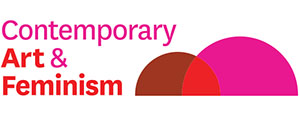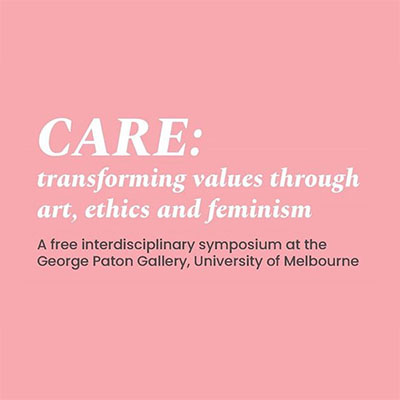CARE : Transforming values through art, ethics and feminism
Interdisciplinary symposium, George Paton Gallery, University of Melbourne
30 October - 2 November, 2019
Four days of talks, performances, workshops, and artworks, with over 50 artists, activists, writers, researchers, dancers and performers from around Australia who are thinking and practicing care in inspiring ways.
Download the full symposium schedule with abstracts and contributor Bios - Download as pdf
Download symposium poster - Download as pdf
Thank you to George Paton Gallery, University of Melbourne Student Union (UMSU), and our volunteers Leia Alex, John Paul Cretney, Claire Field, Tal Fitpatrick and Jacquelin Tsui.
Scroll down for images and further information on each artist/researcher presentation, in alphabetical order and see Care Tabs for additional documentation on the Care Symposium exhibition, performances and workshops.
Hadeel Abdelhameed, Theatre Cares; Staging the Testimony of a Female War Journalist - paper presentation
Bringing women’s experiences of war to theatre challenges the dominant war rhetoric. By having women as the focus of war narrative, the concept and praxis of war shift. Conventionally, women do not have stories about war to narrate, men do. So, the first layer of invisibility of those women starts from their motherlands with the lack of acknowledgement of and care about their significant roles that they play in conflicts. Part of this marginalisation is due to the misapprehension of women’s roles because the stereotypical involvement of women is recurrently limited to humanitarian ends. Even now, the idea that women can be part of the military force is often faced with scepticism and sometimes with sarcasm. Accordingly, presenting female war accounts through conventional literary and artistic conduits, empowers their side of war story, and visibilize their war experiences when official and national resources overlook them. Marie Lourey’s play Bare Witness is selected in this article to demonstrates the dynamic nature of theatre when presenting challenging topics such as women’s war involvement. The article also emphasizes that theatre is the embodiment and reflection of the national memory because it is a forum of remembrance, and an aesthetic convention of acknowledgement. The importance of the instantaneousness of theatre when it is produced and received across any type of boundaries is an open invitation for us all to care about what is presented on the stage. Because the first step of care is acknowledgement.

Julie Louise Bacon, Duration and Care - performance lecture
A short speculative, visual presentation on care as a durational field, including traces of documentation from my art, curatorial and pedagogic practice. Following this I will lead/coordinate an exploratory discussion in which participants will be invited to share thoughts and/or contribute to a collective large-scale sketch on thinking around care and time. My interest in care is woven through my durational performance practice and my attention to bodies and site.

Kylie Banyard –Daydreamer - installation
When Daydreamer was originally presented at Firstdraft gallery in 2014, it took the form of a large-scale wooden geodesic dome. It was purposely designed as a welcoming social space for collective imagining, discussion and speculation. Participants were encouraged to enter the artwork, sit down on floor cushions and spend time bathed in the flickering light of an optical apparatus known as a Dreamachine. Those who entered the space were invited to experience their own subjective inner visions through an encounter with the Dreamachine – each person’s internal phenomena uniquely shaped by their own lived experience. The Dreamachine itself is said to encourage the imagination and expand consciousness through the flickering effects of light. According to creators Brian Gysin and Ian Sommerville, “when flickering light synchs-up with the brain’s alpha rhythms the flashes can cause individuals to ‘see’ colours, visions, or even entire three-dimensional landscapes with their eyes closed”.1 In this way, the work seeks to extend beyond the usual dynamic of artist (producer), artwork (object) and viewer (consumer). By troubling conventional understandings of the artist as primary creative producer, the generative potential of the imagination is also bestowed upon the viewer/ participant. The work puts forward the proposition that we all share a desire to imagine the world as it might be otherwise, yet however shared this desire might be, we would undoubtably all imagine these alternative visions in different ways. The intimate space Daydreamer facilitates will embody an ethics of care by providing an additional microcosm for continued co-creation within the larger overarching supportive environment of the symposium. Daydreamer will offer an intimate nook and playful alternative way to continue conversations concerning questions at the heart of the Care Project, such as how can we as artists enact “care in practices which might forge an alternative ethics in the age of neoliberalism?”

Catherine Bell, Facing Death Creatively - workshop
Facing Death Creatively is a communal workshop that uses craft materials and socially-engaged processes to promote healthy and meaningful discussions about our mortality. The workshop involves making a miniature vessel out of a soft, biodegradable, sculpting medium. The material is non-toxic, and very easy to manipulate so all ages and levels of dexterity can participate. The vessel becomes a portrait of the maker, and a catalyst for discussing the participant’s final resting place. The workshop was designed during a 2018 artist in residence at Centre For The Study Of Substructured Loss: Applied Grief and Bereavement Research in London and was delivered for the first time to over 300 delegates at an international conference on Art and Death held at St Christopher’s Hospice, UK.
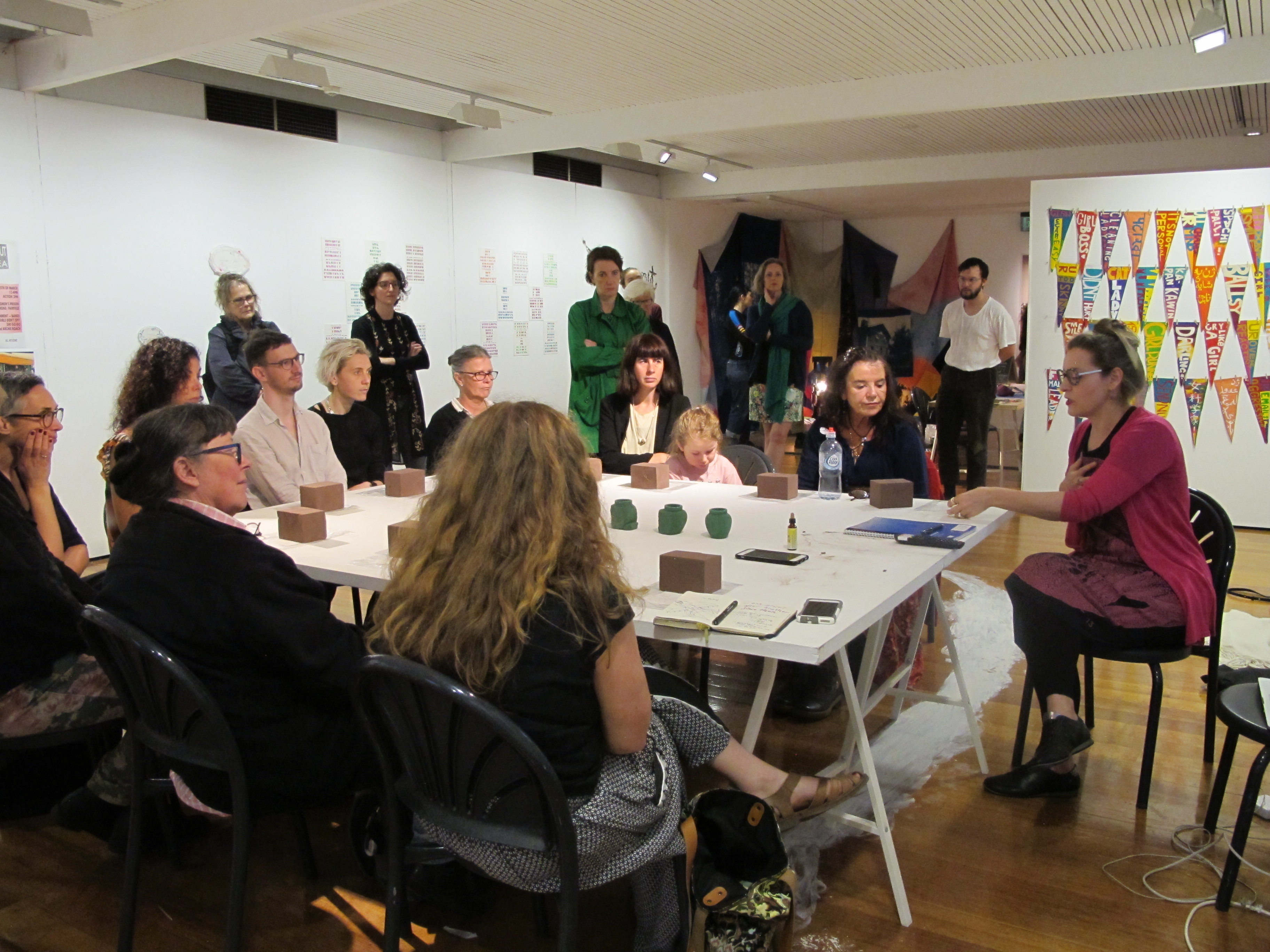
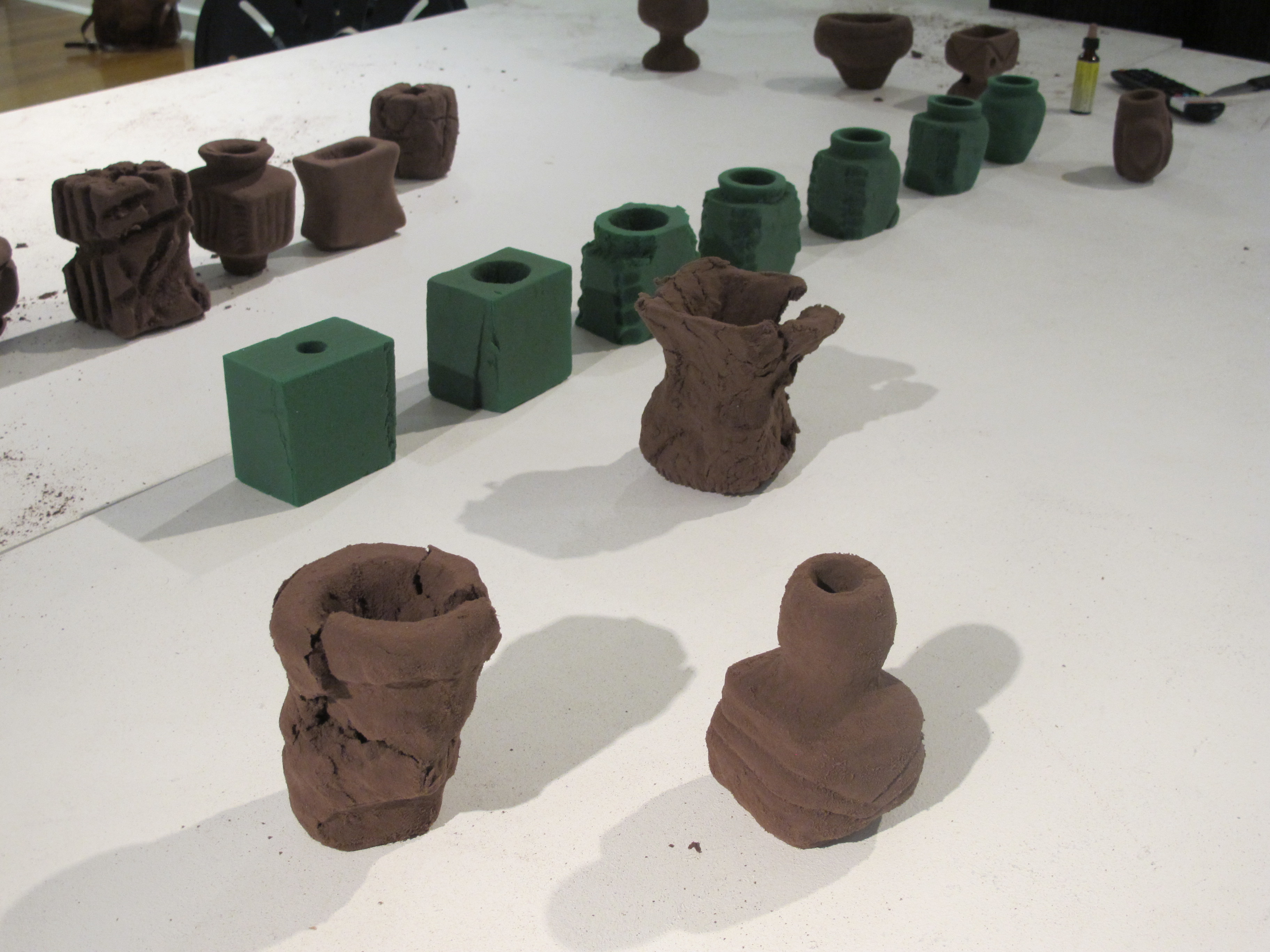
Louisa Bufardeci, Tacktical Aesthetics - performance lecture
Tacking is a practice I'm developing as part of my PhD at the VCA. It is an example of what I'm calling "tacktical aesthetics." Tacktical aesthetics exemplify practices that make an art work of the space between and with people. By definition, tacktical aesthetics are ephemeral, short in duration and underwhelming in effect. Tacking is a string figuring practice where two people create a figure as one person.
Luci Callipari-Marcuzzo – eredità [heritage], vita [life], and ricordo i fili [remember the threads] - textile series - and Tracing Threads of the Past: Collective Crochet Workshop
“The stitch is lost unless the thread be knotted." Italian proverb The artworks presented have been co-created with my mother Anna. They combine her hand worked biancheria (linen), crafted during her pre‐teen years in Calabria, Italy for her corredo (glory‐box or trousseau) before migrating to Australia in the 1950s, with my hand embroidered words, eredità [heritage] and vita [life]. The third work, ‘ricordo i fili [remember the threads], further ties our multi-generational practice together, forming a polyphonic dialogue between us, further weaving our lives together in a contemporary visual form. CARE: transforming values through art, ethics and feminism – George Paton Gallery, Melbourne. Oct 30-Nov 2, 2019 The Care project extends the research activities of the research group Contemporary Art and Feminism (CAF) founded at the University of Sydney. The research is hosted by La Trobe University and led by Assoc. Prof Jacqueline Millner, Deputy Head of School of Humanities and Social Sciences (partnerships and connectivity).
Tracing Threads of the Past: Collective Crochet workshop - Utilising modes of narrative enquiry and autoethnography, my multidisciplinary arts practice-based research investigates, interprets and translates the experiences of Calabrian settlers to North West Victoria, Australia in a contemporary visual art and sociological context. Notions of belief and religious practices, gender roles and stereotypes, family relationships, nostalgia, memory and postmemory, cultural loss and preservation are also explored in my work. Through the methodology of live art performance and installation, my work attempts to actively engage with my familial and feminine history. An integral part of my practice-led research is the self-transformation into an imagined version of my Calabrian grandmothers. During these enactments, I make artefacts utilising traditional women’s modes of making – sewing, embroidery and crochet. The work is a manifestation of the hopes, dreams and desires of migrant women and strives to honour their voices which were often silenced by the dominant gender roles within the Calabrian diaspora. The Oxford dictionary lists Chain stitch as an embroidery or crochet stitch resembling a chain. Tracing threads of the past: Collective Crochet is a communal live art group performance, which invites people to crochet chains of red embroidery thread, a symbol of the chain migration scheme which many migrants, (North West Victoria especially) were participants. The collective gesture through the action of making chains of crochet in a communal setting, reflects on the human experience of movement and migration, and interprets the hand-crafted artefacts into transcultural exchanges of giving and receiving, sharing and caring about each other’s interwoven stories of departure and arrival.
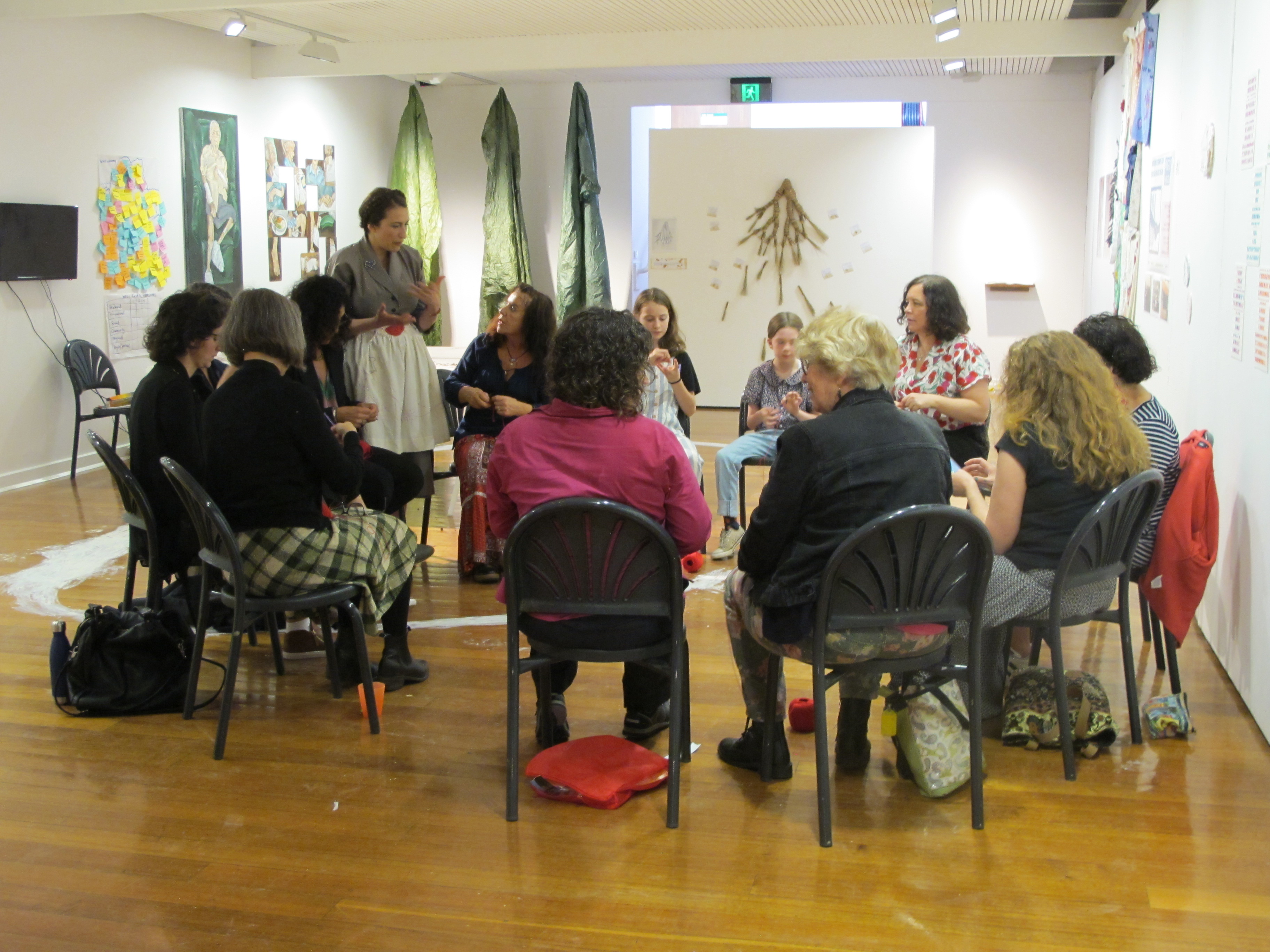
Veronica Caven Aldous, You’ve Got A Mouth: Afternoon Tea Talking Circle - discussion
You’ve Got A Mouth: Afternoon Tea Talking Circle is a discussion circle where artists’ and participants read the writings of others. Participants are asked to prepare a 500-word statement, which will be read out loud on the day, by another participant. I have set up Talking Circles and Tea Tables in the past, to slow down the experience of viewing art and to engage with artists and the general public genuinely and slowly. One response I received from a public tea table event was that I was involved in the “aesthetics of care”. This session will build on this framework.

Carolyn Craig, Utopian thinking in collaborative art practices - paper presentation
Utopian thinking in collaborative art practices – how respect can shape artist run spaces. My presentation will discuss and invite discussion around ideas of artist led pedagogies of care and collaboration. I will discuss Frontyard Projects, Marrickville School of Economics and Loftus Street projects as examples of participatory discourse and alternate modes of production and then invite participants to offer critical reflections on future models for participatory frameworks. These three destructuring projects will be considered within the historical context of the artist led school (Joseph Beuys, Luis Camnitzer, Lygia Clark), and in particular the model of the Public School. I will focus my discussion on Frontyard’s Projects use of language to subvert standardised power structures in artist run spaces and how this is actioned as part of a strategy to harness community led learning through digital tools. Their expanded school model, that encompasses gardening, digital reading groups and the decommissioned Australia Council library is compared to Marrickville School of Economics term-based framework where outcomes are generated and quasi enrolment processes initiated. Loftus street projects are then considered within its very different spatial relationships that attempt to disrupt private spaces through site generated open research platforms in domestic homes. The discussion is intended to provoke a group generated ‘futuring’ session.
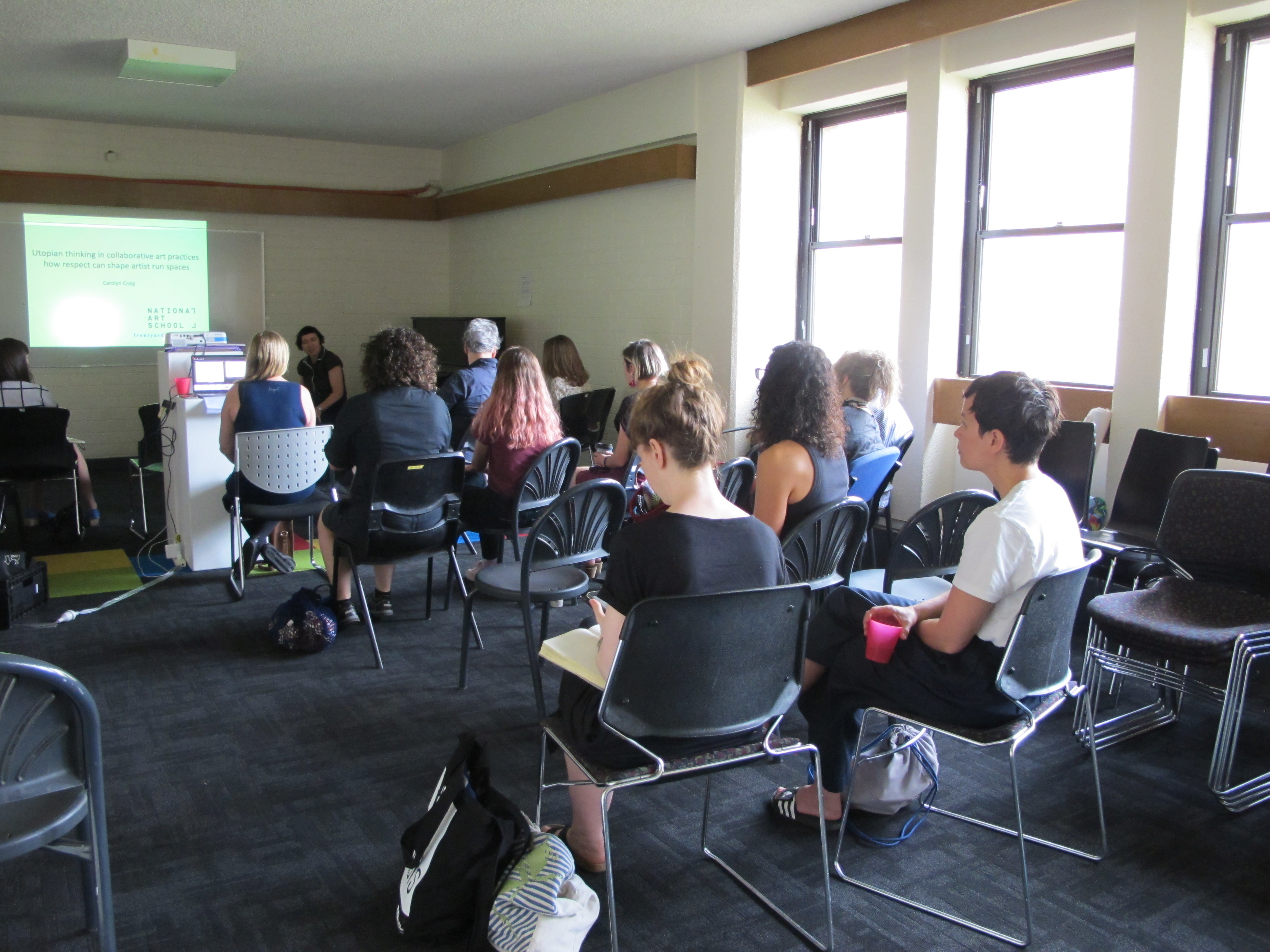
Liz Day, Working in the Trouble - paper presentation
WORKING IN THE TROUBLE, is a series of work based in Day's work over 25 years working in marginal spaces. In 2011 she began developing work along the Parramatta River where there are the remains of colonial prisons and institutions, that continue into the 20th century (and 21st) to be a focus for mental health services. Much of her work has considered the image of 'the prison on the landscape' as a way to focus the damage on the Australian landscape wrought by colonisation. Working in the Trouble is a new Doctoral Project through Deakin University developing a theoretical structure for projects developed over the last five years. This includes, amongst others, Invisible Words/Invisible Worlds developed during a residency at the University of Newcastle's Centre for Solar Voltaics, incorporating images of carbon nano tubes under an electron microscope making a poetic association with the invisible worlds of the incarcerated since the beginning of Australia's white history. And Myco Logic developed with mental health groups that draws on an image of the networked mycelial root systems of fungi to produce handcrafted fungi. With thanks to curator Claire Taylor from greyspace who collaborated with the production and realisation of these projects.
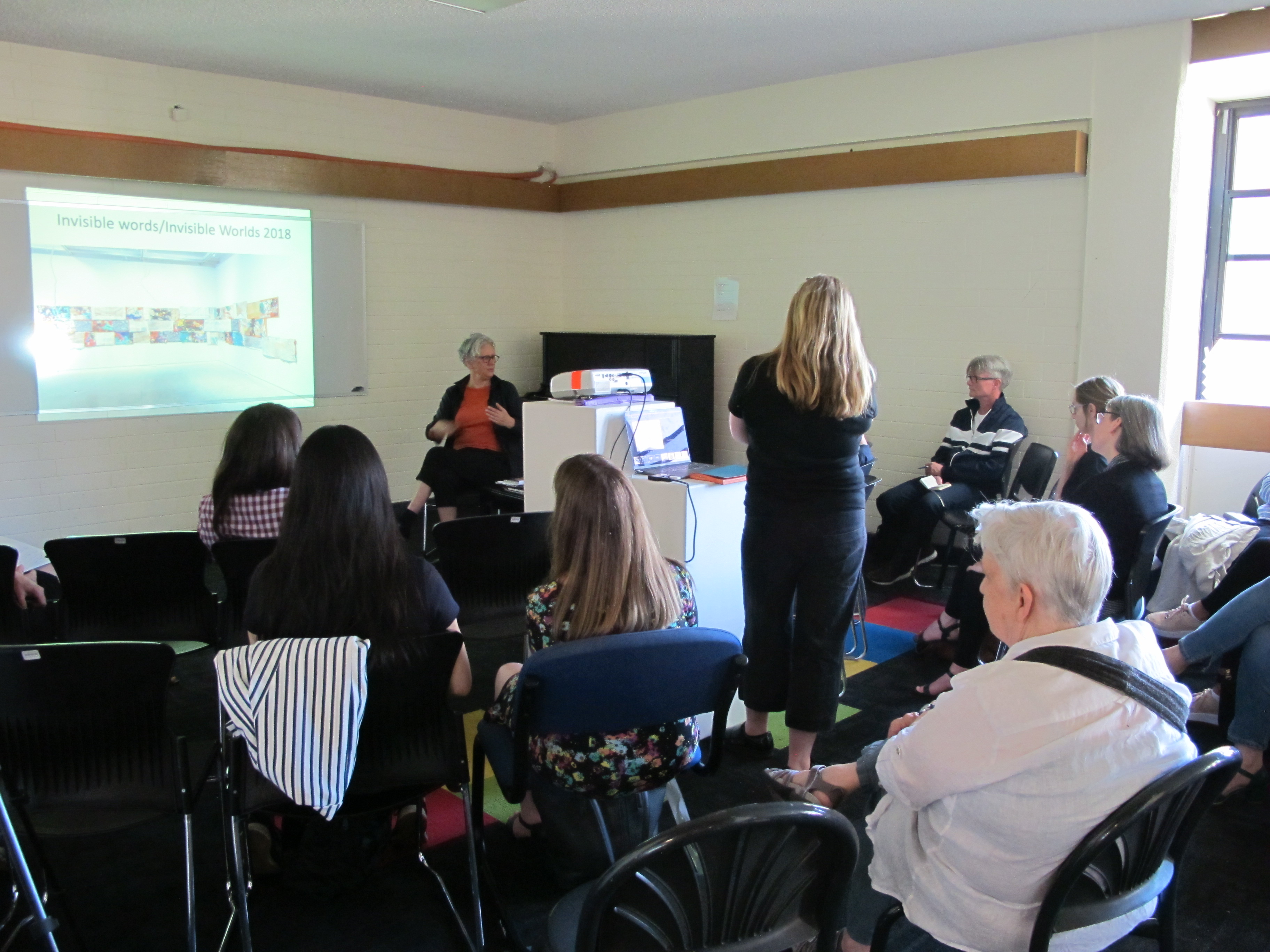
FavourEconomy, Favour Economy Hub, with Claire Field & Tonié Field, audio installation - participatory session and discussion
FavourEconomy is a collection of audio recordings shared by womxn who work in the artist. The project operates as a platform for contributors to voice their experience, insights and skills and share it to the archive. The archive is comprised of a series of volumes that develop over a one-year period coinciding with each financial year. FavourEconomy operates as an audio gift economy, where each contributor has determined the content and value of their recording set in accordance with their own experiences, and is received by the listener according to their current situation and need. The online open platform concurrently acts to give power and value to the femxle voice, which is too often silenced. FavourEconomy is an ongoing collaborative project currently led by Stella Chen, Claire field and Tonié Field. The conceptual framework was initially developed in 2015 by Claire Field, Alexandra Pedley and Bronwyn Treacy.
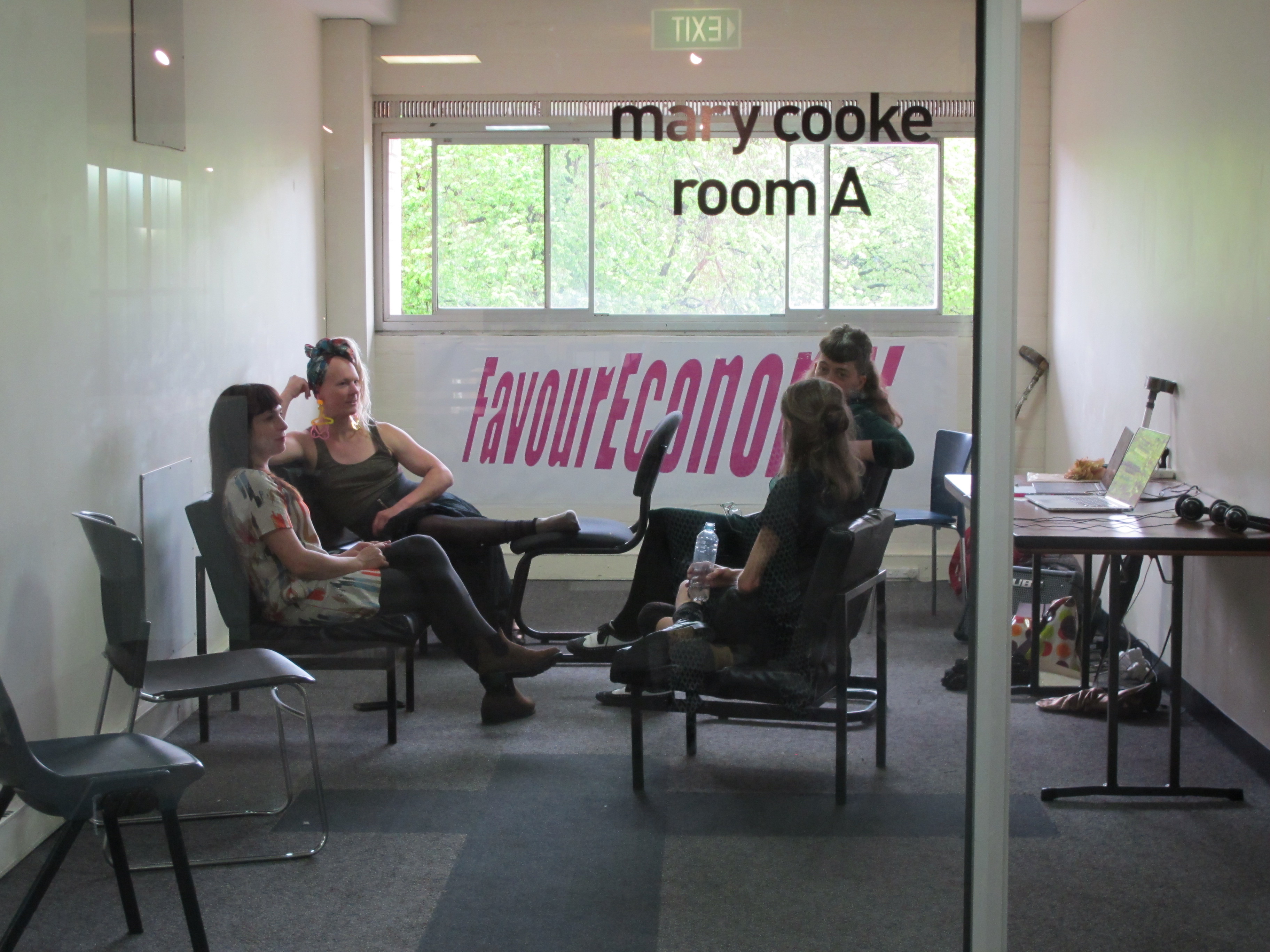
Claire Field and Caroline Phillips, Archiving Care - participatory installation
Feminist philosopher Virginia Held (2006) argues that the central focus of care “is on the compelling moral salience of attending to and meeting the needs of the particular others for whom we take responsibility.” Joan Tronto writes of the four ethical elements of care as “attentive, responsible, responsive, and iterative.” Alongside these ideas, the artists take heed of the framework developed by The Information Maintainers in Information Maintenance as a Practice of Care, who argue “Power inheres in the acts of identifying, classifying, and ordering information. People who are privileged to define information of importance and dictate how it is organized and shared have disproportionate influence on the shape and dynamics of society.” Archiving Care is a participatory, process-based sculptural work led by artists Claire Field and Caroline Phillips. In this work, participants are invited to consider what they have recently actively cared for and participate in building a growing archive of keepsakes, that materialises an archive of care. Archiving Care is an aesthetic and process-based response to these ideas, that connects the artists’ interests and practices of archiving the stories and histories of women’s art - Claire through FavourEconomy, and Caroline through the Women’s Art Register - and amplifies the practice of archiving as a practice of care.


Tal Fitzpatrick, Craftivism as a mode of feminist resistance and change making - UDHR Quilt project - paper presentation
Craftivism as a mode of feminist resistance and change making will discuss the Universal Declaration of Human Rights quilt project as the key case study for how makers from across the globe can come together and create change. The UDHR project tells a really important story for how craft can materialise how much women & the LGBTQIA+ community really CARE about human rights - as well as how the ethics of intersectional feminist activism can be folded into the design of craftivism projects so that both the experience and the outcome of participating in these projects reflects the core values of equity, equality, generosity and criticality.

Zoe Freney – Between Heaven and Earth (work in progress) - digital video, 2019, edited by Sarah Tickle
This work forms part of my PhD research project, which is an exploration of how the embodied knowledge of mothering can be used to counter the dominant stereotypes of motherhood and mothers. While the Western Christian model of the Virgin Mary as perfect mother may be less prevalent in contemporary culture, mothers’ bodies and behaviours continue to be regulated and controlled by media and advertising. Mothers are exhorted to be tidy in body, mind and home. But mothering is not a private undertaking. Motherspace is leisure space where mothers are always at work; the playground, the library, the fair. In the video I visit the spaces I dwell in with my children. Through the movements of my body I highlight the constant negotiation of society’s expectations of mothers and the endless, repetitive tasks of loving protection.
Joan Garvan, Reconfiguring Care within families in 21st century Australia - paper presentation
The twentieth century was characterised by the gendered family form; the male breadwinner and female carer. The 21st century, however, is marked by change with increasing numbers of women in the workplace and talk about an earner-carer workplace model. While the majority of couples aspire to a form of equal or egalitarian family there are nevertheless trends towards gendered roles after the birth of a child. Our social system is failing to keep pace with cultural change. Care for the vulnerable remains central to the workings of a civil society yet we struggle to adequately respond. In the first half of this workshop Joan will cite related literature that includes reference to flourishing body of matricentric feminism, feminist theorists who are concerned with the social structuring of care, and targets that have been set in the UN Sustainable Development Goals so as to promote gender equity. In the second half of the session Joan will be outline the strategy she has taken to date so as to promote the recognition and policy and practice response to the sharing of unpaid care and ask for participant comments and feedback.

Jodie Goldring, Collaborative Nourishment - workshop and installation
People come together to make art in a process of care; to listen, allow, connect and respond… Caring for each other - The art world can be a competitive and elite cultural environment that fosters individuality to the detriment of community. Let’s spend time weaving objects and stories with each other. The Artist comes out of her studio and shares skills to help people create as a collaborative group. Caring for the environment - Committed to using recycled and/or natural materials in a time of climate emergency. Work that is aligned with other caring activities such as permaculture, gardening and community art made in outdoor environments. Let’s put pressure on governments to come up with real solutions to our waste management crisis.


Andrew Goodman and Alexis Harley, Scales of Attention, Significance and Change - presentation
In his final book, Charles Darwin described earthworms as "more powerful than the African elephant and more important to the economy than the cow". Darwin's account of earthworms as a geological force bookended a career that began with a publication about tiny, seemingly insignificant sea creatures that cumulatively build vast coral reefs and moved on to theorising the ways apparently insignificant differences amplify through time to produce "endless forms most wonderful". Despite Darwin's interventions, western biological discourses have tended to disregard certain forms of life, forms that still routinely fall beneath the notice of bio conservation politics. We'll investigate how practices of looking, thinking, and feeling on scales suggested by Romantic culture, classical physics, and Enlightenment mechanics continue to thwart recognition of the significance of small species for the systems with which they are organised., before moving on to a series of live experiments in noticing, with earthworms, fungi, parasites, and microbiota. We'll invite you to respond to how you see and feel (and don't see and feel) in the presence of yeasts and mushrooms and broken off bits of superorganisms.
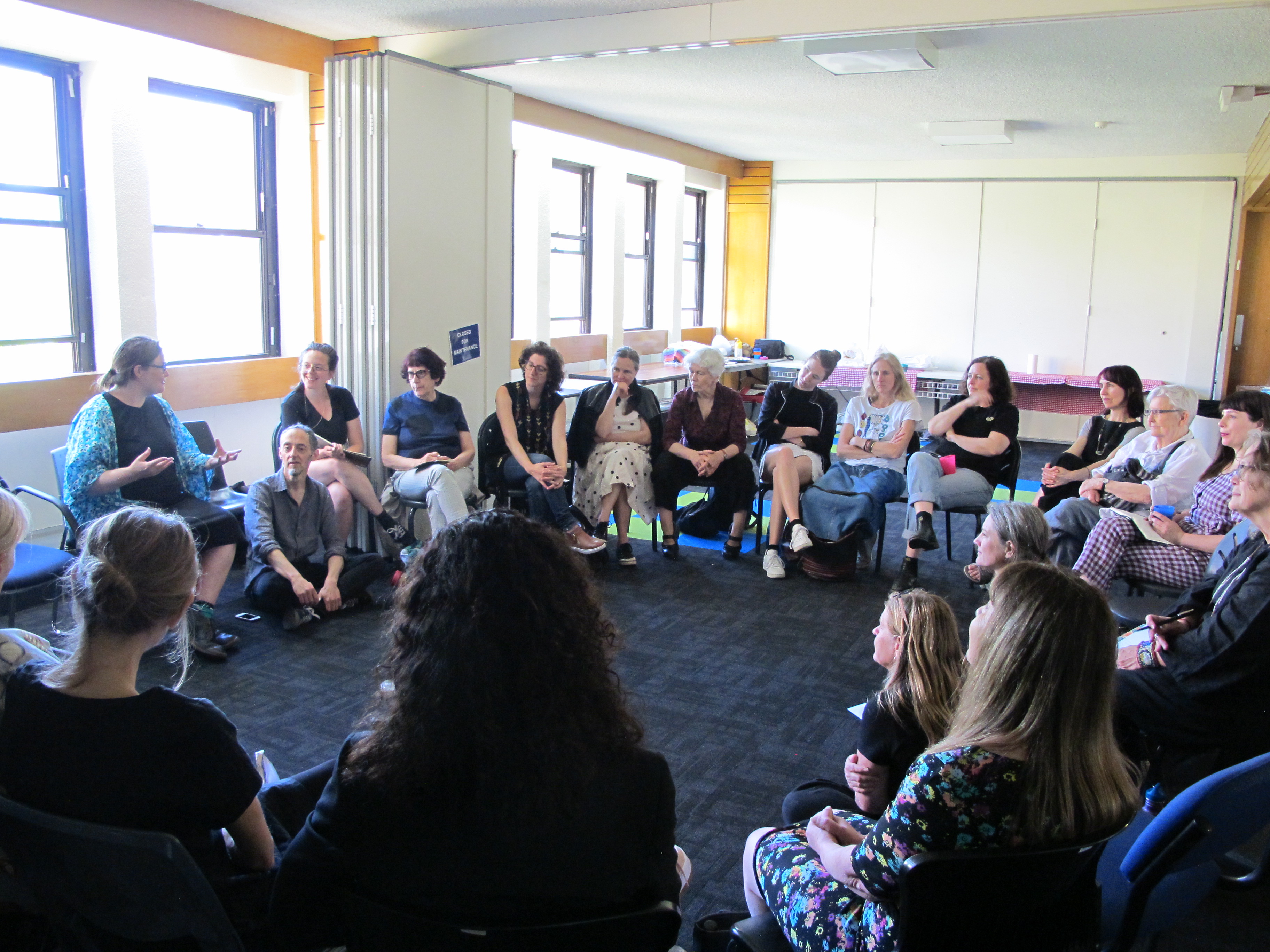
Sylvia Griffin, I Just Couldn’t Keep Him Safe - paper presentation
For some years, my practice has dealt with ways of expressing trauma, grief and mourning. This has entailed aspects of care, particularly between mothers and daughters. As a first-generation Australian born to Hungarian Holocaust survivors, my artistic work has been informed by postmemory (or second-generational) trauma and the effects that this has had on family relationships. My more recent work has been concerned with another aspect of care in familial relationships – that of parenting a mentally ill adult child. Both situations – postmemory and mental illness – commonly evoke stigma, shame and guilt amongst other things towards those affected both directly and often indirectly. My young adult son has a mental illness that has all but severed a deeply caring relationship. It’s led me to question my parenting skills, both past and present, several other relationships, and how to navigate our way through the society we are part of. The literature that has informed aspects of this paper examines this terrible sense of grief, ambivalence and loss that inhabits those of us – particularly mothers - who love and care for and/or about these adult children. “Disenfranchised grief”, “non-death bereavement”, “family estrangement”, “chronic sorrow” are all terms that capture the emotions involved in this journey that none of us want to be on. Yet, they also somehow fail to adequately express the individual experience. This paper will l compare some of the research into this area to my own experiences and consider how my current art practice aims to “speak” of the unspeakable. This is done partly through the use of personal objects that may evoke aspects of care, or other means to reference trauma. My practice is materially diverse, incorporating sculpture, installation, textiles, video, performance, drawing and photography. This work attempts to somehow reconcile – or perhaps just acknowledge – the complexities of loss and regain some semblance of control.

Glenda Hambly, Disempowerment and Cinema Storytelling – A Feminist and Australian Story - paper presentation
It can be argued that the Hollywood paradigm of screenwriting is both androcentric and ethnocentric. It fails to include the different way women tell stories, the different way disempowered female central characters function in stories, as well as the different way film stories are told by Australians who write in the Australian narrative form. Sociolinguist Jennifer Coates’ research (1996, 2003) established the essential difference between male and female storytelling. When women tell each other stories, power is not claimed by the individual storyteller, rather it exists within the story group. Male storytelling, by contrast, is essentially competitive and likely to focus on the individual achievement of the storytellers. Screenwriting analysist, Helen Jacey (2017) comes to a similar conclusion about the differences in male versus female centric film stories. Jacey argues a heroine’s story involves her emotional and physical process of experiencing a situation, not the drive to solve a problem. Another screenwriting analyst, Stephen Cleary (2019), posits that central characters who are female, are often powerless, and because they operate in a complex, often hostile, male dominated world. Their only option is to use indirect action at the micro level. Australia is often described as having a ‘blokey’ culture, but ironically, our storytelling - in both literature and film (Turner, 1986) - reflects the same ‘disempowered’ frame that Cleary identifies. It derives from our origins of a penal colony, but the sense of powerlessness was not just social and political. The early settlers were also overwhelmed by the hostile natural world that surrounded them. These foundational experiences have exerted a powerful influence in shaping the nation’s sense of itself. The cultural value of personal impotency has shaped an Australian narrative tradition that focuses on the group or ensemble rather than the individual, episodic structure, a reluctant or no particular hero and muted or no individual transformation. A recalibration of Hollywood’s dominance of film narrative is long overdue both in terms of gender equity and cultural specificity. Different approaches to cinematic storytelling must become part of the mainstream.

Fiona Harrisson, Taking Time: conversations in and with place - paper presentation
My research explores relational practices of attending and attuning to place. I take time looking, listening, moving and feeling in and with landscape. It is a practice of being present to the world as-it-is. By spending time in particular landscapes, often returning to the same place over and over, I witness the landscape as it changes and my capacity to see shifts. I am experimenting with ways of registering my perceptions as they shift through time. Utilising techniques of drawing, photography and writing which extend acts of perceiving. For the past year I have been exploring making no-thing but ‘being’ in a local forest. It is an embodied practice that can include walking, sitting, speaking, asking, reading, rolling and dancing. It is a moving practice of being present to what is emerging between myself and the forest, and it is a practice that teeters between ‘being’ and ‘doing’. I make written dated records of each encounter in the forest. These records document the evolution of a practice. I offer samples of the residues and records of my embryonic experiment for a conversation in light of the question: what if we held the world as alive?
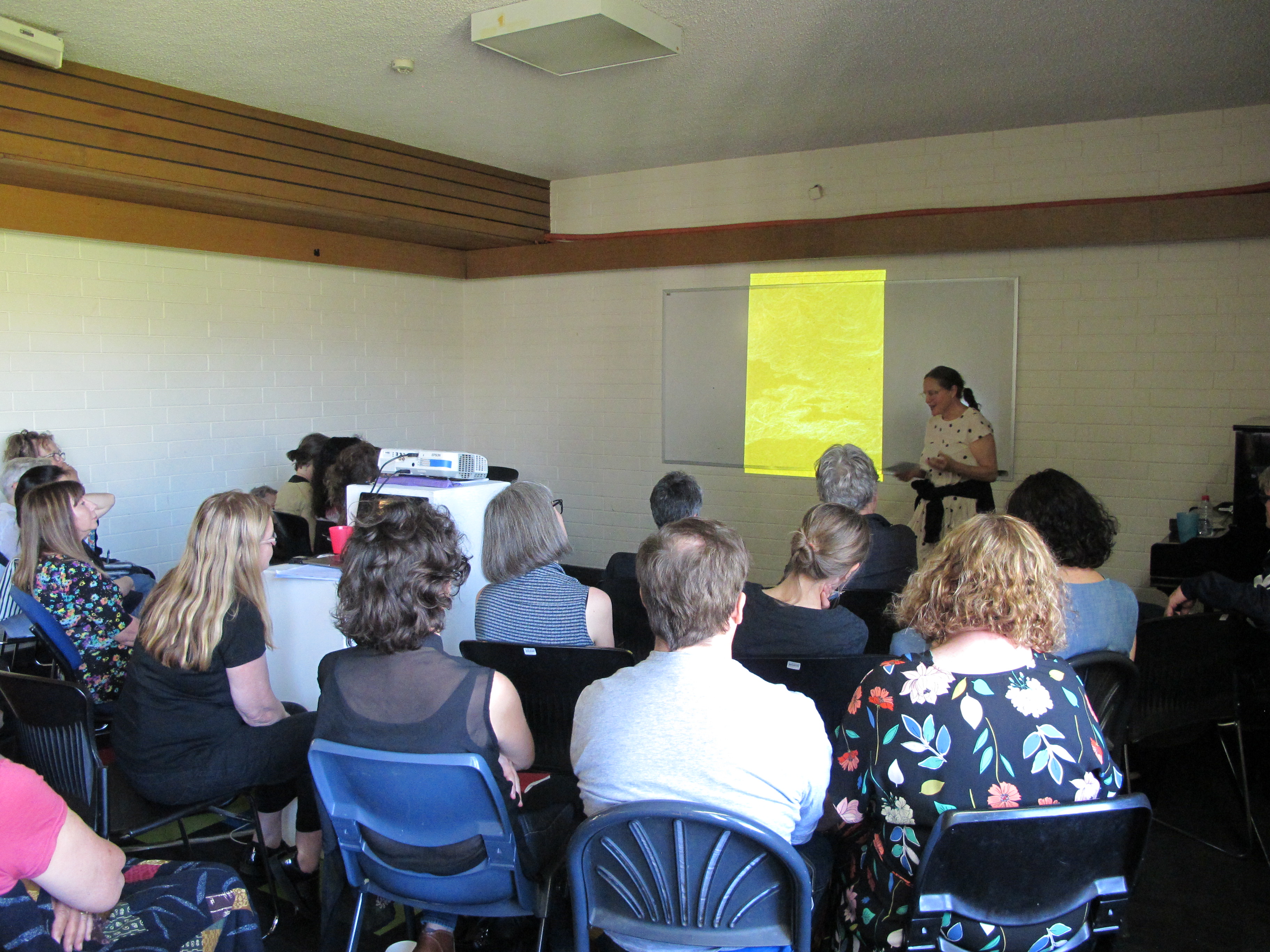
Rachael Haynes, Small Acts of Resistance Can Create Change - performance lecture, and Works on Paper series
Rachael’s most recent body of work addresses the polyvocal nature of contemporary feminism. Taking as a starting point the provocation that, ‘small acts of resistance can create change’ this body of work draws specifically on contemporary protest language and feminist social history archives. The presentation at the CARE symposium comprises a series of works on paper (approx. 9 x A3 drawings) installed in the George Paton Gallery, and a short lecture performance (10-15 minutes) to accompany these works.

Illimine Collective (Majella Thomas and Michael Angelucci), O Had I known that thus it happens - performance
This performance thematises our 15 year-long relationship and uses reciprocal tattooing to construct literal events in which body inscription, pain and care for the other are exhibited. Using extended duration, reiteration and a slow pace, it suspends and exhausts symbolic or conceptual meanings leaving only the gesture and the practice. The reciprocal transformation, the appearance of ‘lines’ on the body, the scarring – inherent to long relationships – is enacted literally, thus eliciting deeper engagement and creating a space of contemplation shared by artists and audience. O had I known that thus it happens is a first test of this work, a performative exploration of care as practice. We will introduce the performance with a brief contextualisation of our work, practice and research.
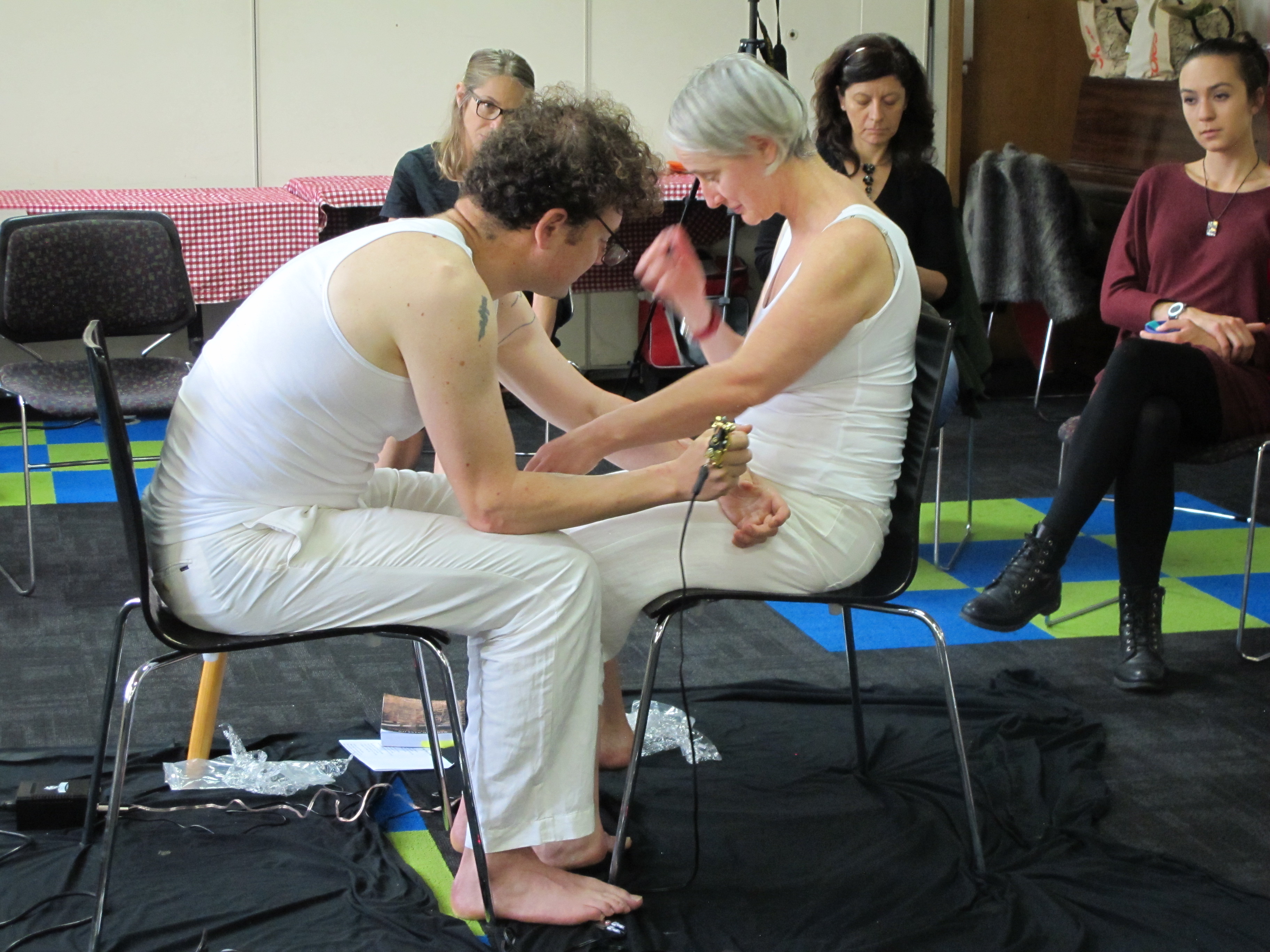
Linda Judge – Stroke - painting series
On reflection, care has always been at the core of my art practice, and has been expressed in my ongoing role as art teacher in the community sector, and my roles as curator in conjunction with Arts Project Australia and independently, working with mostly the elderly and self -taught artists. My practice has flexed itself around my roles as carer at different stages in my life, often finding its expression within that role. For example, when my children were small, we made work collaboratively or they became my subject matter. Similarly, after my mother suffered a massive stroke, I would draw her as I spent time by her bedside, showing her that I was present and interested in her, even when other forms of communication were limited. More recently my work has reflected my ongoing care for the environment, and in May this year I showed a series of works made from bread tags, that I began to collect after seeing Chris Jordan’s photographs of albatross that had died after ingesting marine plastics. Stroke - These two works are acrylic on canvas and were painted directly in the case of the panelled work and from drawings in the case of the full portrait, of my mother after she suffered a massive stroke. With limited communication, art became my way of showing her that I was present and interested in her life such as it was. The panelled work was painted on foolscap boards, a size that no longer exists.
Benison Kilby, Care Under Capitalism: Women’s Work Inside and Outside the Home in Contemporary Art - paper presentation
Taking a number of influential works of feminist labour activism from the 1970s and 80s as a point of departure, Bodies of Work is an exhibition that brings together a group of ten Australian and international artists and collectives using a range of approaches to draw attention to women’s work both inside and outside the home. In many instances, the artists have used artistic processes that resist traditional methods of art production, such as working collectively and using experimental techniques. Their works attest to the multifaceted experiences and effects of work by broaching the related issues of the commodified, discarded and diseased reproductive female body; sex and sexuality; exhaustion and psychic investment. By bringing into dialogue women’s paid and unpaid labour, the exhibition seeks to underline how these two types of work are interrelated. For instance, the fact that the responsibility of domestic work and child rearing still largely falls to women has a direct effect on their paid employment, predisposing women to an increased likelihood of being in casual, part-time and low-paid work. At the same time, forms of work traditionally deemed women’s work and those occupations geared towards women, are also devalued. It is therefore the aim of this exhibition to develop consciousness around the issue of the gendered division of labour and its social construction, with the awareness that it has particular urgency today due to the pressures that the dismantling of the welfare state and the commodification of domestic and care work are placing on women unequally across the globe.
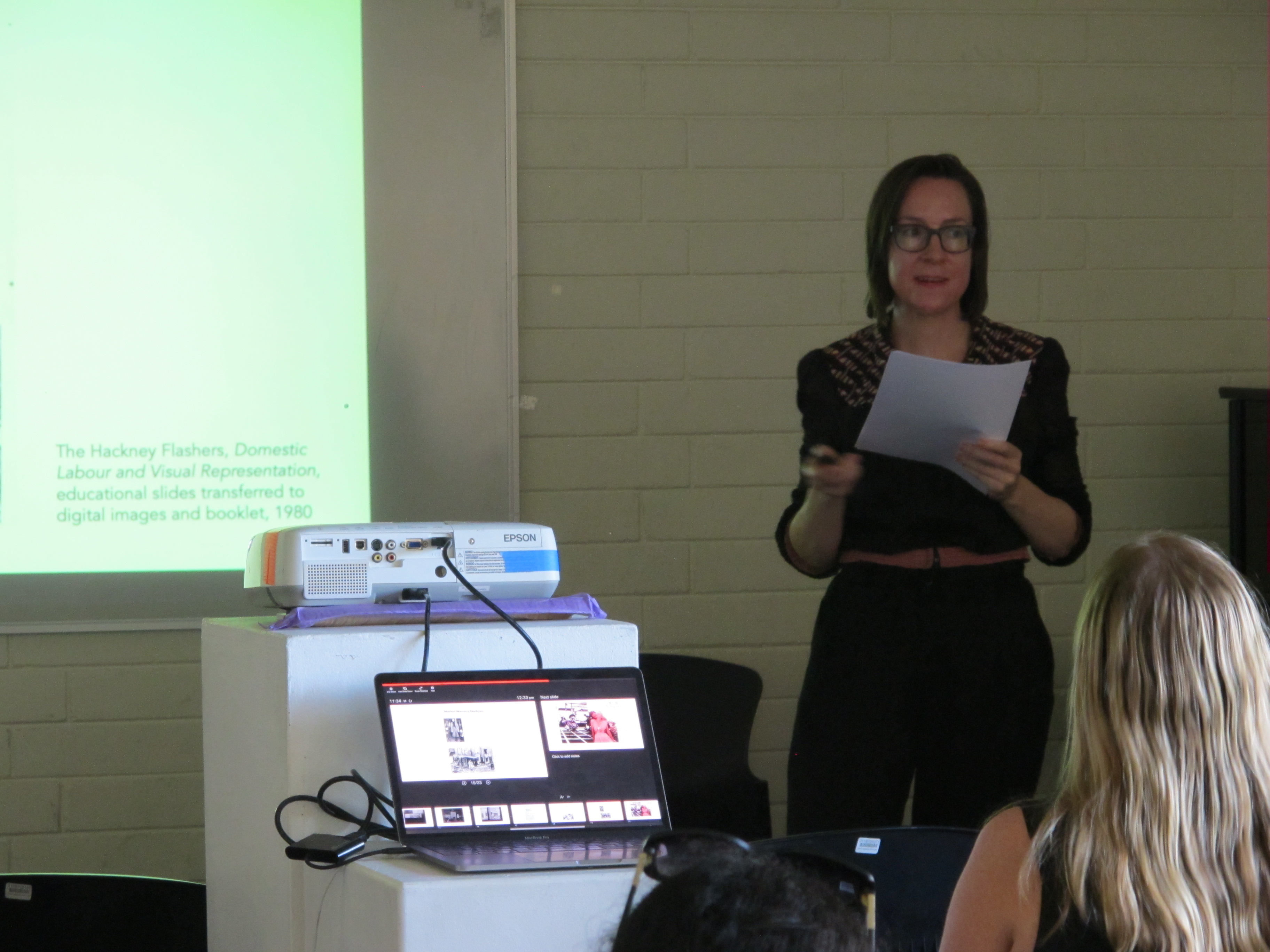
The LAST Collective (Beth Arnold, Melanie Irwin, Katie Lee, Clare Rae and Hanna Tai) - The Last Collective Presents - video
Light and Air and Space and Time (LAST) is a Melbourne-based artist collective. The artists have come together with shared affinities among their respective practices along with a firm belief that independent artists do not have to work alone. LAST provides support for each artist’s practice, such as practical and theoretical discussions, promotion, logistical collaboration and a strong sense of community. The LAST artists aim to foster long-term sustainable art practice within both the Collective, and the broader contemporary art field. Underlying the LAST collective’s name is a paradoxical and ironic reference to the Charles Bukowski poem “air and light and time and space.” In this poem Bukowski smashes the notion that there are perfect conditions to make art in, at the same time (coincidentally), listing the fundamental and shared affinities within the LAST collective’s individual art practices. This inherent contradiction within Bukowski’s poem, as well as in the realities of making art over a long period of time, has brought the LAST collective together, operating as both a survival strategy, and a celebration of the elemental forces that we care about. Forming a collective has meant we must collectively address what it is we care about, as well as collectively face the ongoing challenges of making artwork about Light and Air and Space and Time, in an often market-driven art world and within a neoliberal economic climate. In addition to spatial and environmental interventions, the LAST artists use a variety of performative strategies and gestures in their respective practices. These broadly manifest as physical interactions with site, objects, materials and/or other individuals. Often these actions are inquisitive, simple and non-virtuosic and they might be shown live (as in the work of Beth Arnold, Melanie Irwin and Katie Lee) or via photographic media (Clare Rae and Hanna Tai). These performative works address and embody feminist ideologies (either implicit or explicit), notions of resistance, and the connection of time and space through movement, among other themes and concepts.
Joanne Makas – The Three Graces in Black Gully - sculpture
The Three Graces in Black Gully is an installation that reflects on subjects that arise from our current global condition, including systems of improvisation, the construction of ritual and themes of mobility and vulnerability. In Ancient Greek Mythology the main role of The Three Graces was to bestow beauty, charm and goodness on young women and to give joy and the feeling of wellbeing to people in general. In this installation they are a symbol of care for country and place, plus thinking more broadly about climate change issues we are being confronted with globally. The work initially emerged whilst on an art residency at New England Regional Art Museum in Armidale. Driving from Sydney to Armidale, along Thunderbolt’s Way, I noticed the absence of green in the countryside. The land was dry. Black Gully Reserve, which is behind the museum, was a daily reminder of this crisis in our country. During the residency Armidale was appointed with level 5 water restrictions. Significantly, tissue paper is a material that is used to wrap and protect objects when moving or when we buy something. The tissue paper in The Three Graces in Black Gully is a metaphor for protecting our land against global warming. Additionally, each Grace is 5mts long to represent the level 5 restrictions that all towns in the area had reached and are a gesture towards care and protection of human spirit and land. The Three Graces in Black Gully represent vulnerability, fragility and endurance and to give the feeling of hope to people in general.
Nancy Mauro-Flude and Kate Geck, Loric Signalling: Caring about contiguous spectrum and the non-existent horizon - participatory performance session
Our world is increasingly designed to support technological ubiquity across a spectrum of digitally-augmented interactions in space - a paradigm essential for what is often dubbed as ‘Internet of Things (IOT). It is becoming evident that prevalent, dualistic assumptions around the entanglements of networks and humans do not afford care, nor the complexity required to articulate these potentialities. Angela Davis (2008) suggests that “Radical simply means grasping things at the root”. There we propose to realign our grip on the technological infrastructures that prod us in order to develop and consider new models of nonhuman/human/computer understandings that afford care and attentiveness; that exist beyond supplements to luxury. Since stakeholder automation affects the kinds of infrastructures we are exposed to daily, it is suggested that our patterned inertia (displayed in our behaviour and projections onto certain materials and artificial life forms) is potentially limiting contemporary AI and eventually will also do the same for human beings. We reach out and align ourselves with the wayward temperament of Isabelle Eberhardt who claimed “There are limits to every domain and laws to govern every organised power. But the vagrant owns the whole vast earth that ends only at the non-existent horizon…” (2001, 34) and draw up on Simonsen’s (2019) notion of Atmospheric Practices in order to reconsider the Contiguous Spectrum and our somatic relationship in the age of automation. In doing so we propose a model "A Taxonomy for Contiguous Spectrum" (fig 1.), in order to gain agency over our (neo)materiality and suggest entangled purposes; rather than deterministic design based on expedience.

Rebecca Mayo, Care In Action - steering group discussion
Care in Action will consider recent readings (see below for details) to discuss the exhibition Care in Action, under development for ANU Project Space in 2020. The exhibition will explore the role artists can play in cultivating habits of care. It will concentrate on art practices such as walking, natural dyeing and weaving, all of which can contribute to care relations between country, more-than-human life and ourselves. Such relations are predicated on tending, spending time and holding space, qualities and actions that have been eroded by neo-liberal strategies focussed on growth and profit. Through a series of walks, reading groups, weaving and natural dyeing sessions this exhibition aims to reclaim some time and space to contemplate how we might, as artists and citizens, conduct ourselves with and through practices of care. The aim of the discussion is twofold: to establish which members of the Care network might interested in contributing or participating in this exhibition and to open discussion around the premise of the exhibition and how the proposed structure and approach might best be developed. The aim is for Project Space to become a workshop and meeting place. The collective artist-led activities, positioned in a central thoroughfare of the ANU SOAD, will activate an inclusive and public space where participants can examine how relations of care might inform ways of being in the world.
Reading list:
Sharon Blakey and Liz Mitchell, Studies In Material Thinking Vol 17, Paper 01, Unfolding: A Multisensorial Dialogue in 'Material Time',
Shannon Mattern, Minimal Maintenance
Helena Reckitt, Habits of Care
Katharine McKinnon, Community and care at the foundations of life - paper presentation - and Creating Community Economies of Care - workshop - led by Katharine McKinnon, with input from the Community Economies Collective. (www.communityeconomies.org)
In this talk, Dr. Katharine McKinnon discusses her forthcoming book, Birthing Work, and the larger project of exploring economies of care that it is situated within. Birthing Work explores the experience of childbirth, tracing the contributions of the multiple human and non-human actors in the birth space. Drawing on ethnographic interviews with mothers, midwives and obstetricians, it considers who does the work of childbirth, expanding the boundaries for who (and what) is responsible for this collective labour and highlighting the interdependencies that characterise it. The result is a map of a childbirth assemblage that reveals how our beginnings inevitably take place in moments of community. The talk explores what lessons can be learned from this different view of our beginnings as human subjects. The collective work of care required at the start of life offers a moment to reflect on how we understand our beginnings-incommunity, and how we practice being-in-community as we weave together livelihoods and shape the places in which we live. How do care and interdependency define our foundations? How do we build upon them? Where are our points of origin? And how do we let them shape our pathways into the future?
The interactive workshop will draw on the methods of community economies scholarship and activism to explore alternative representations of economic life that place care at the foundations. The workshop will introduce tools used in action research and community engagement projects being undertaken by members of the global Community Economies Research Network, underway in all kinds of places and contexts from the Pacific, to Colombia, to Finland. The workshop will utilise these tools to make visible the relations of care required by economic life and position ourselves in a more-than-capitalist economy. It will begin with the collaborative creation of a ‘diverse economies iceberg’, a visual representation of the diverse forms of economic practices that sustain individuals, households, communities and our other planetary companions. Based on the ‘iceberg’ participants will map the forms of community-making and practices of care embedded in livelihoods.

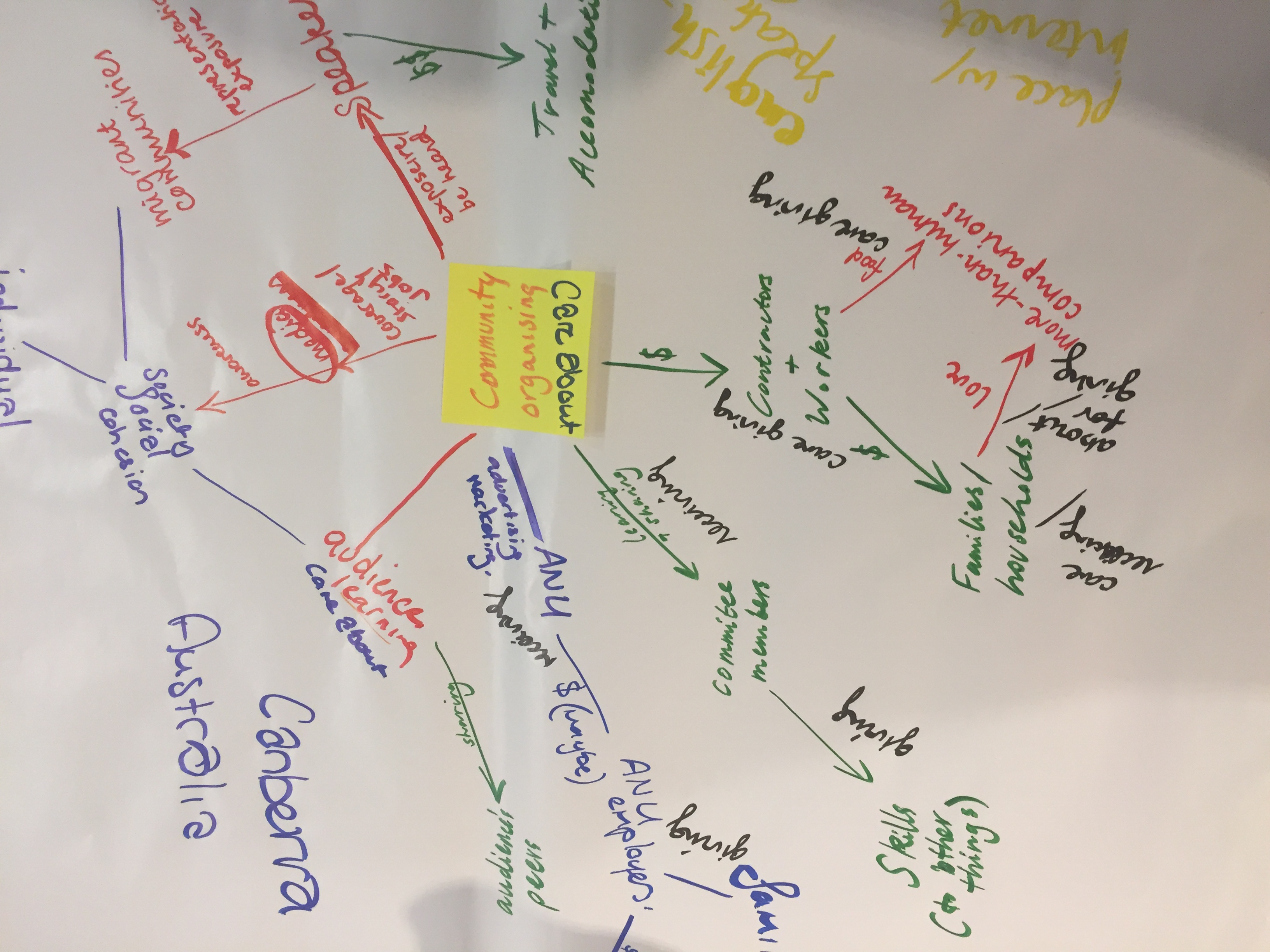
Zac Millner-Cretney, Animals and Care - paper presentation
A discussion of why non-human animals should be incorporated into any ethic of care - and why the values that underpin animal advocacy make it a natural component of social justice frameworks.
Kate Mullen, Contours of Contemplation: carving out space for and through deep listening - Performance and workshop
Within a climate of increasing ecological and socio-political instability, this workshop considers how the simple practice of ‘deep listening’ may support our bodies to adapt to and integrate disruption and change. The session will go on to explore several practical methods of accessing and embodying the heightened states of stillness and awareness that deep listening invites, such as engaging intuitive mark making.
Kelum Palipane, Intersecting Mobilities; Footscray - paper presentation
This speculative project considers an expanded role that transportation hubs can play in broadening the conceptual understanding of the public sphere as one that is diverse and complex. The hub is considered as a point of intersection in journeys of differing spatial and temporal scales: the inter-suburban commute and of migration that spans across continental distances. The proposal is considered across multiple sites following a migratory path, beginning in a laneway of the Pettah district in Colombo, Sri Lanka, to the Footscray train station in Melbourne. Multicultural Melbourne - Global shifts in development mean immigration to Australia and particularly Melbourne, is increasingly from culturally and linguistically diverse populations. Accommodating this diversity is an urgent issue. However, in the current political climate, neutralizing difference and exclusionary practices are normalized; an approach that also manifests in the way the built environment is designed and managed. This undermines the agency and autonomy of certain groups and contributes to an increasingly divisive society. Democratic public space - Public spaces are crucial settings where differences of lifestyle, belief and understanding intersect. It’s where the tensions and opportunities of difference plays out in everyday life and where the future of Australian public life is negotiated. Footscray and Pettah - This project focuses on the inner Melbourne suburb of Footscray that has a long history as a meeting place. Initially for the Yalukit-willan, the Marin-balluk and the Wurundjeri people, and subsequently for waves of new immigrants who gather in Footscray for culturally specific goods and services. The social networks that form around these activities have become essential in fostering a sense of belonging and community participation. The train station and tracks however have spatially and symbolically cleaved Footscray. On one side is a population distanced from a changing and multiplicitous public. On the other, one that is disengaged from an older settled generation and the Maribyrnong river with its restorative and symbolic potential. We propose a public space linked to the train station that re-connects the populations, trade and the river. Through the design explorations we identify and follow a set of socio-spatial markers that originate in a laneway in Pettah – an intensely diverse commercial district of Colombo, as they arrive, survive and thrive in a new setting. We present a model for public space design that learns from difference, helping create a complex and pluralistic environment that upholds the true spirit of the public sphere.
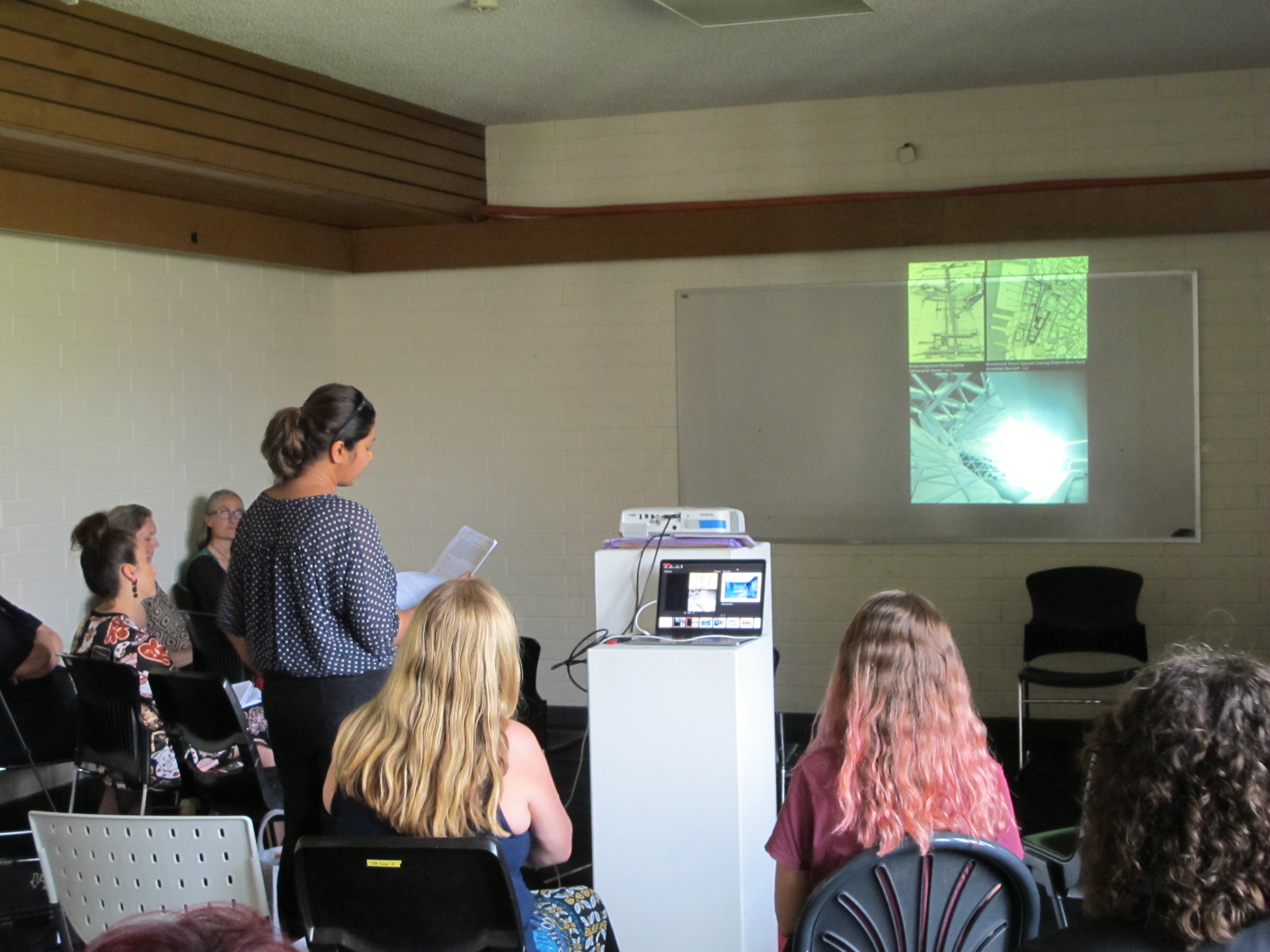
Cathy Parry, The Pink Shadow - participatory performance
A series of short exchanges undertaken with visitors to the symposium for the purpose of spreading much needed superpowers. The Pink Shadow is an entity with the capability of giving superpowers to others. The process is mysterious, allowing participants to freely choose a power to help them create change in themselves or give them the power to create change in a system that has its doors closed. The powers themselves are passed on through tokens in a 2.5- minute exchange. Previous exchanges can be seen at the artists website
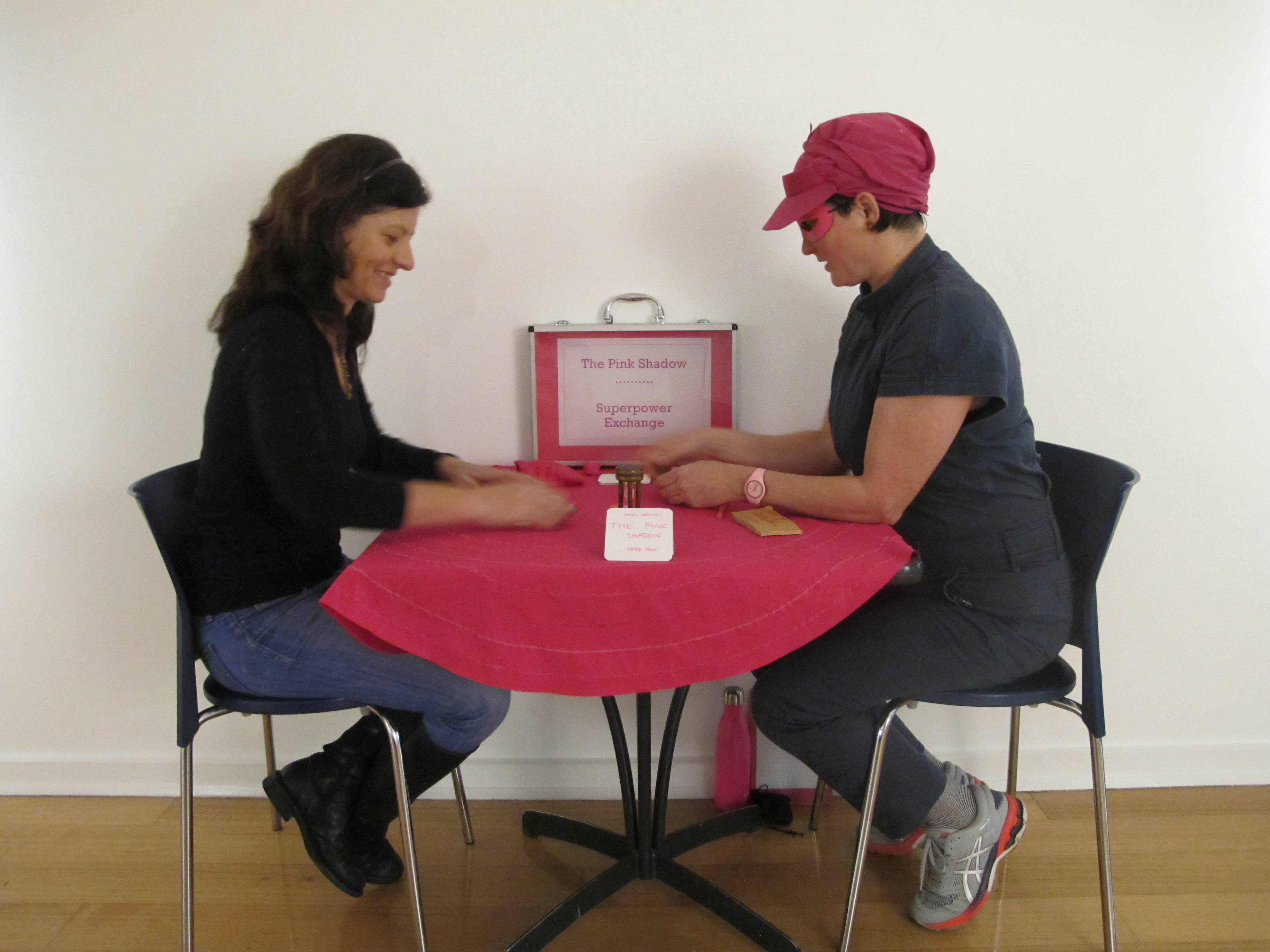
Katrina Rank and Fine Lines, Dance Performances - The Right & Birdwatching
The original Rite of Spring was first performed by the Ballet Russes in Paris in 1913. Avantgarde in every respect from Stravinsky’s score to Nijinsky’s choreography, it caused a riot. Just prior to World War 1, anti-Russian sentiment had reached a new peak, and this fueled the flames for the mayhem. The Rite was a serious work about sacrifice for the greater good. Our Right explores sacrifice through the lens of contemporary politics. What does it take to follow your convictions and make change? Must you change who you are? Must you play the game? Are there any alternatives to the present mechanism of politics and its games, strategies and tactics? Inspired by current trends towards personality politics, leadership takeovers and endless spin, The Right is a rollercoaster ride to be experienced close up. The Right is presented by Fine Lines, an inter-generational mature dance collective that seeks visibility, representation and parity for dancers who resist mainstream expectations. We fight discriminatory, oppressive and pervasive attitudes towards women as they age in general, and women in dance in particular. Fine Lines seeks to create an alternative aesthetic in dance where older performers are part of our cultural conversation. In an ageist society that hungers for youthful bodies and virtuosity, this is particularly important. Sylph, swan, ghostly lover. Blue bird, old bird, bower bird. Birdwatching is a work about the space between the observer and the observed, between moments of observation, of judging and noticing. It is influenced by a history of bird ballets etched a thousand times into this woman's flesh. Birdwatching defies ageist stereotypes and reclaims ownership of these etched lines and stories, layering this with a thousand reclaimed white plastic bags to create a feathered costume which is plucked by the audience on completion of the dance.
Nina Ross and Jessie Scott, Artist Parents and Artists Union - paper presentation
Nina Ross and Jessie Scott will present research conducted in collaboration with Lizzy Sampson on working as an artist parent in an Australian context. Earlier this year, they published their findings titled Culture of Silence: arts parents accepting, rejecting or adapting to, an unfriendly workplace , which they will extract aspects of in order to raise awareness of the artist/parent experience, as well as provide practical solutions; a result of the survey’s outcomes. Further to this but intrinsically connected, Nina will present a concise update on the progress of a union for Australian artists that she is currently organisingthe result of a recent residency at the Australian Tapestry workshop with other Melbourne based artists and a representative of the National Union of Workers. This union, called Artists Union is designed by artists for artists and aims to respond to the precarious nature of the arts industry as well as create a platform for collective action and solidarity with other workers in Australia.

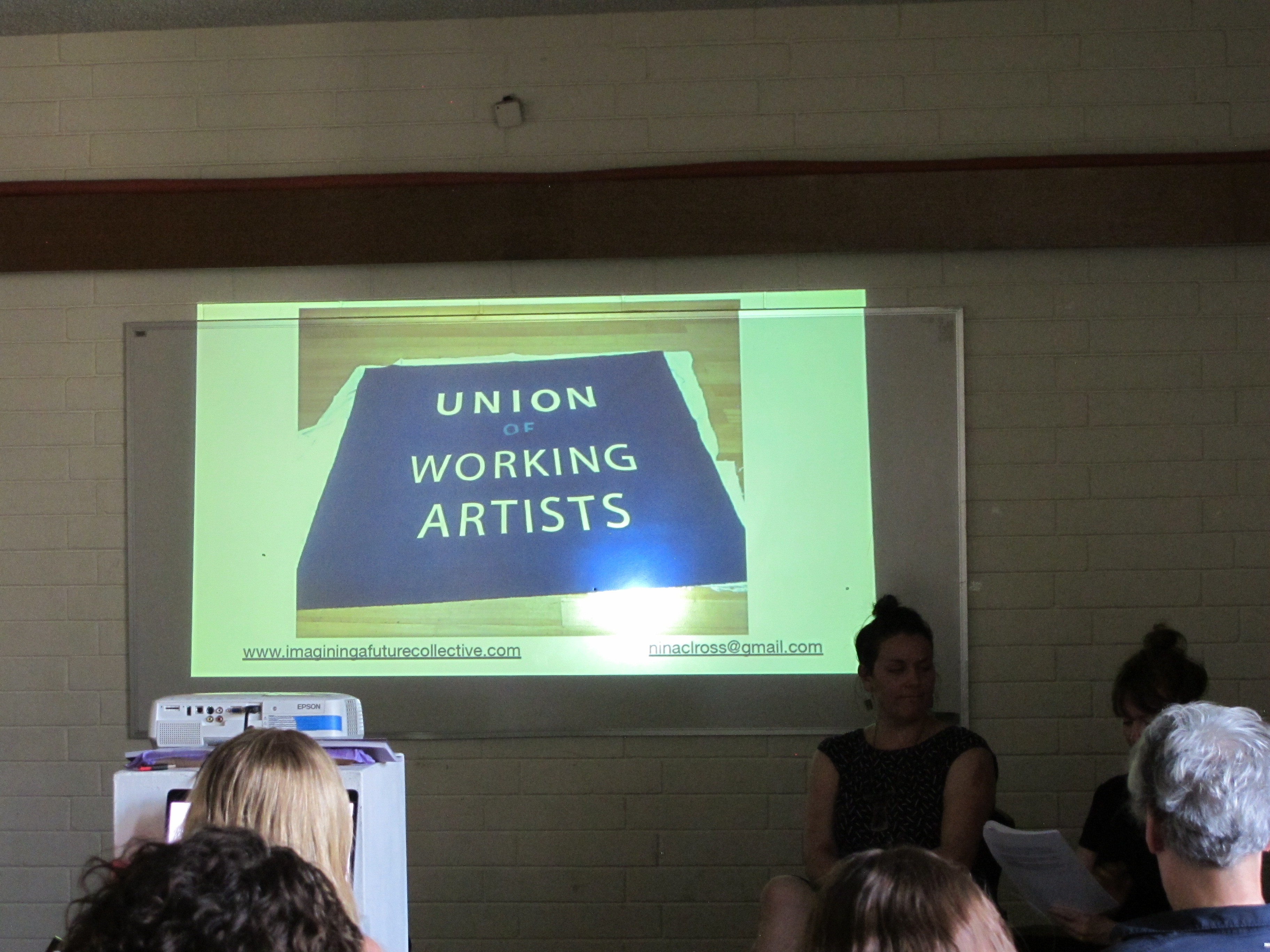
Sarah Rudledge, Dad Uses The Iron - installation
Dad Uses the Iron, is a work in progress which re-visits an event from my childhood, circa 1990. Our family’s expensive Tefal iron promised to deliver us from the hot labour of pressing clothes. The iron never performed. One day Dad ripped it from the power point, marched down the backyard and swung it forcefully above his head a few times before letting it go. I remember standing behind him in awe. Working with my Dad to re-imagine this event as an artwork, Dad Uses the Iron, is less a comment on the frustrations of domestic labour and rather an investigation into how the movements of repetition and final release registered a sense of liberation in both of our bodies. While the actual event was over very quickly, here the gesture is prolonged and framed – through pieces of narrative text, video and still image – as a means of consciously re-feeling the feeling and exploring the performative potential of these residual fragments.
Emma Russell – podcast and photographs related to her research and co-authored book Resisting Carceral Violence (2018)
This tells the story of how activists—through a combination of creative direct actions, reformist lobbying and legal challenges—forged an anti-carceral feminist movement that traversed the prison walls. This history provides vital lessons for service providers, social justice advocates and campaigners, academics and students concerned with the violence of incarceration. It calls for a willingness to look beyond the prison and instead embrace creative solutions to broader structural inequalities and social harm.
Elizabeth Savage Kooronya, Conversations of Heart - collaborative textile installation and paper presentation
‘Conversations of Heart’ follows the previous ‘Conversations of Soul’ which came out of the Black Saturday Bushfires. Three affected women, through their artwork, showed personal stories, and remarkably, hope. It was held in the tiny historic church building in St Andrews. Importantly, this first exhibition informed visitors about the profound pain of loss of loved ones; the trauma of losing homes, personal histories and sense of self. Some of the artworks explored effects of fear and anger as well as acknowledging collective trauma and the vast environmental loss. The second exhibition ‘Conversations of Heart’ is again mainly an exhibition of women’s art and voice - used tea-towels are the canvases. The catalyst for the teatowel project has come about because of growing concern about what seems to be suspicions and mistruths demonising and ‘othering’ people who are not ‘us’ or ‘like me’. Meaning we, as individuals, as a society and as a nation can legitimise our treatment of people who experience disadvantage, difference (from what we perceive as the ‘norm’), and who we fear (without evidence) as ‘other’. To be ‘Other’ is to be less than 'me' or ‘us’. It occurs at many levels and can be unrecognised or deliberate. The Conversations of Heart exhibition also includes statements about care for environment and planet.
Kerryn Sylvia, WE WAIT....What else can we do - wearable object and performance
Over the past few years I have been collecting wooden knots from trees. l have been ritualistically casting these objects, making multiples and growing them in numbers like precious gifts, ritualistic objects in creation and form. There are memories of walks and conversations embedded in each one as a record of experiences shared from mother to daughter to mother. The wearing of the objects activates their presence as ritualistic objects of enchantment, through which I explore the liminal spaces and rites of passage, in the experience of motherhood of my adolescent children. In her book The Mother Knot Jane Lazarre writes: “The only thing which seems to me to be eternal and natural in motherhood is ambivalence and its manifestation in the ever-ongoing cycles of separation and unification with our children.” As a mother, I believe these people are only with me for a short time, that l have no hold over them and my fundamental role in their lives is support them as independent individuals. My care is at arm’s length, my care is through my work, my care is in modelling life as something that should fulfil and sustain you, my care is both a burden and a uniting force. The weight around the neck is like a burden carried but also functions as a gift, the gift of them and of the humility and patience that motherhood brings.
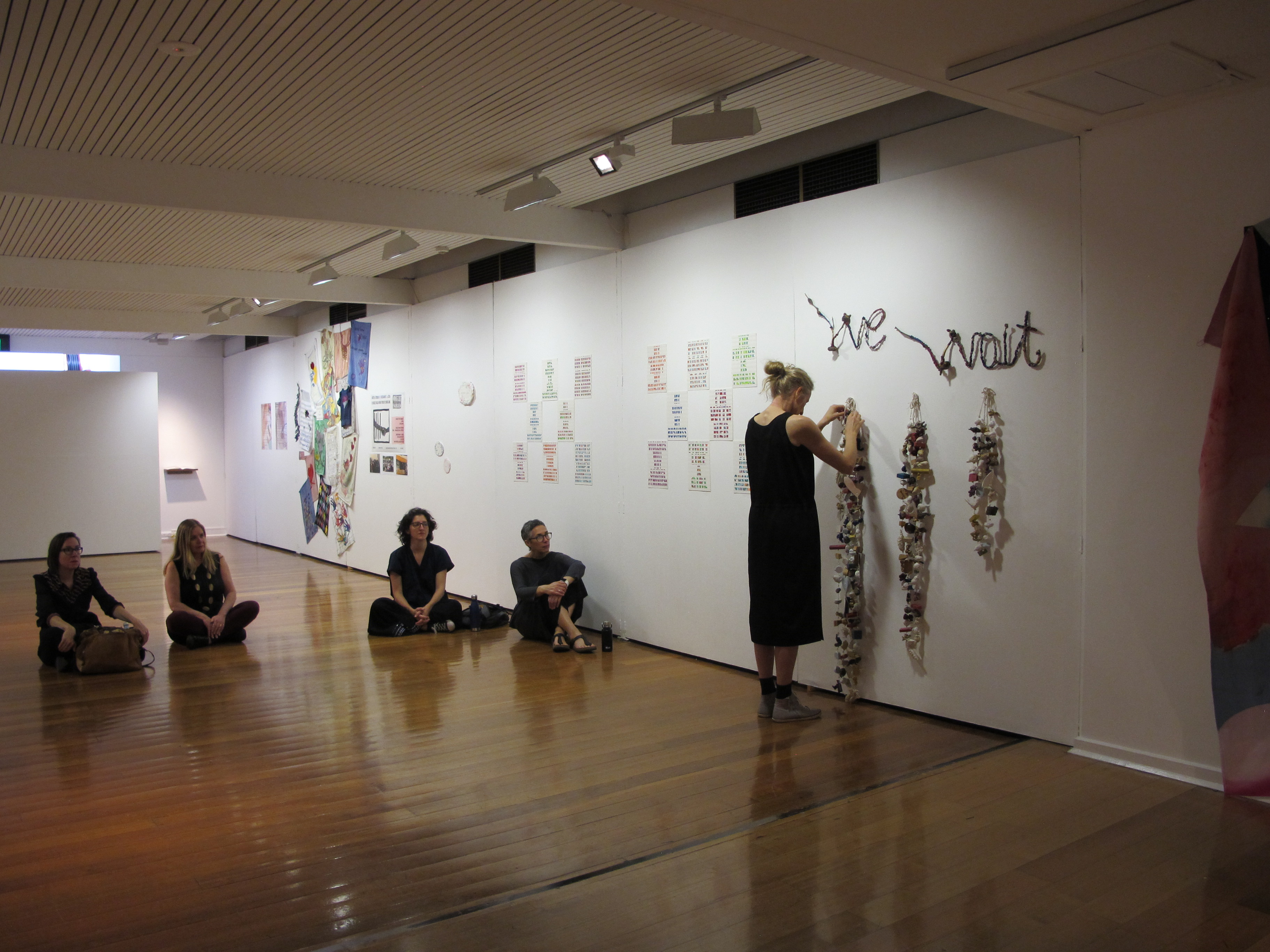
Jane Trengove (with Catherine Bell, Pie Rankine and Susan Long), Whose Voice: Our Voices/Your Voices – Towards an Ethics of Care in Art Practice - discussion
An artist led discussion that focuses on the search for an alternative ethics to challenge the current political climate of neo-liberalism. This is at the heart of the Care Project concerns, and to get the discussion started, four artists will propose variations of an ethics of care in their art practice and how best they have achieved outcomes to this effect; Pie Rankine - An ethic of care when creating and living outside of the economic system; Catherine Bell - An ethic of care when working in art project residencies; Jane Trengove - An ethics of care and inclusion when positioned “in care”; Susan Long - Ethics of care when working in film and with the archive. The session will include presentations on the central idea of a framework for ethical practice, Care enacted publicly by the process of inclusive discussion, a provocation through presentation of a key text and a hypothetical dilemma, and an intervention: an exposé of an in-equal power dynamic “in care/under care” to provoke further discussion. Each artist will speak briefly on the topic, to be followed by open discussion with the floor and the collection of ideas to be provided/returned to the Care Project Network.
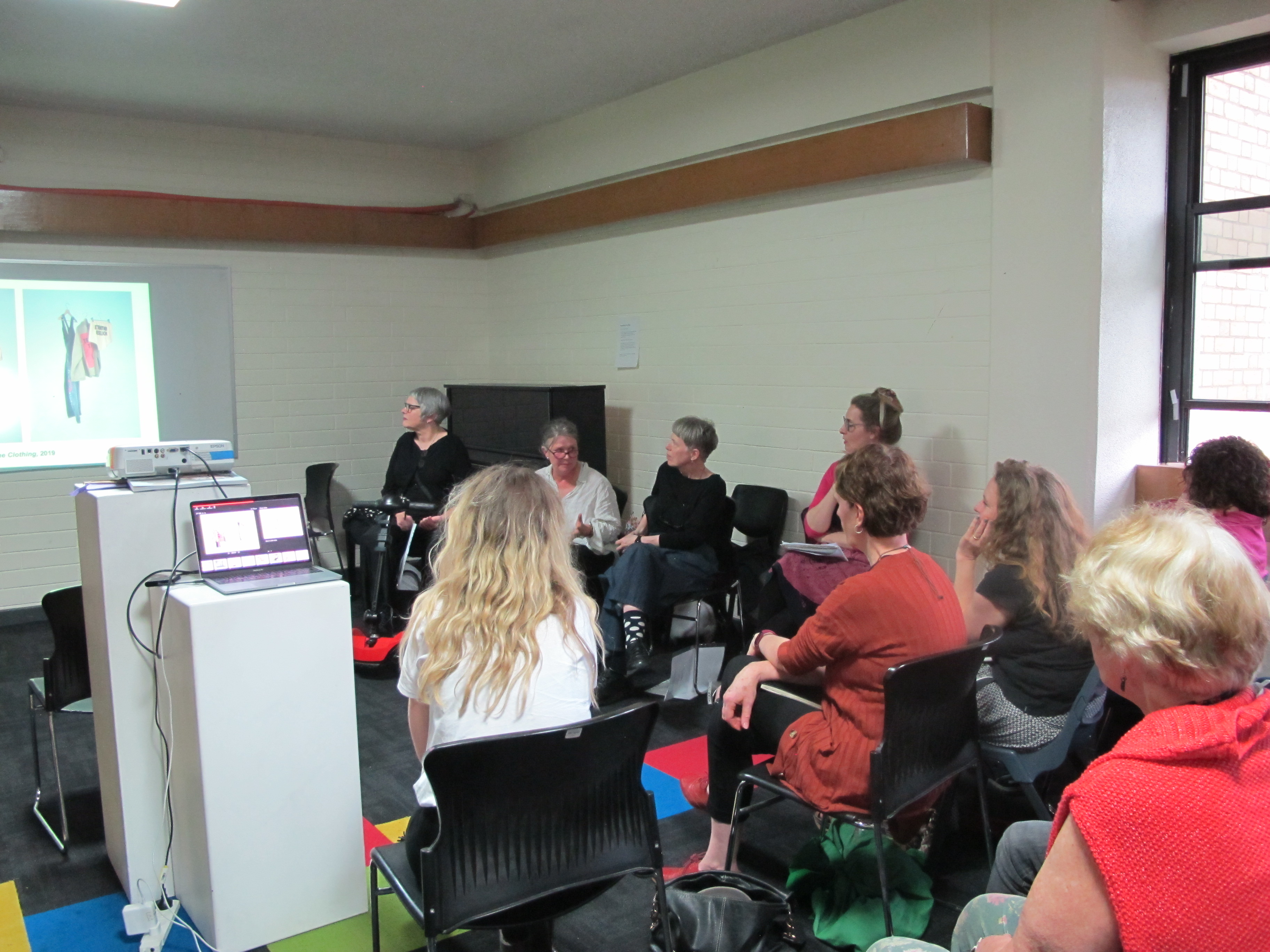
Hartmut Veit – Untitled 2 Doors - sculpture
Handyman acts of maintenance and repair expose and rethink at first glance seemingly unconnected but intrinsic bonds that link the social, political and aesthetic – on one level an object is being repaired but on another in the process (as a social practice) a gesture of care is constituted in relations ‐ a wound is attended to facilitate healing. Acts of repair, maintenance and preservation reduce landfill, whereas neo‐liberal reliance on ever increasing growth and profit result in over‐consumption and excessive waste. These topics are addressed through task‐oriented actions and gestures, which are ordinarily associated with handyman maintenance, renovation and repair to make a complex matrix of relationships visible. Tool‐enabled techniques facilitate relational encounters and active collaboration with matter. They allow the aesthetics of the artwork to emerge out of the visceral qualities of the material itself. Human domination and relationships with the material world are questioned through such acts of care for the earth. How often do we think about the inner ‘life’ and agency of matter within the many doors we walk through each day? Metaphors for our internal psychic worlds, doors and doorways dialectically integrate inside and outside worlds. Drawing on Karen Barad’s concept of “intra‐action”, agency is thought of as not being possessed by discreet, separate entities but emerges through relationships and dynamics between forces.
Hayley West, Women in the death care industry - paper presentation - and After The Gold Rush - photographs
I will be introducing you to leaders in the field of the death care industry internationally and in Australia. Women are now reclaiming roles once granted, and now occupying roles that were once denied. They are artists, death doulas, taxidermists, counsellors, scientists, celebrants, writers, academics, funeral directors, medical practitioners, morticians, change makers and carers. Prior to the much-improved health systems of modern Western societies, death from high infant mortality rates and death from preventable diseases was frequent and familiar. The realities of dealing with dead bodies were (and still are) an everyday consideration. We just don’t see the dead bodies in the flesh anymore. The ritual of being cared for upon death by family and community is now seldom performed. Today death has become sanitised. As we are no longer confronted with death physically, I believe we have increasingly stepped aside emotionally. Progressive discourse regarding death, including end of life care, alternative funeral rites and ways of dying, is still in its infancy. I have long been fascinated with death as a subject in contemporary art practice. As an artist working with social engagement and a death literacy advocate, I believe in empowering the community by sharing practical knowledge through exchange and generosity. When we become more knowledgeable with ways of dying and options in death and then put this knowledge into practice, we in turn become a resource to help others. Being death literate can help people see, navigate and change the system.

Linda Wilken – poster series
In 2008, Bill Henson an Australian artist with an international reputation, advertised an exhibition of a series of photographs, in a Sydney gallery, which included an image of a naked 13-year-old girl. This created controversy beyond the art world, with the then Prime Minister Kevin Rudd stating that the photographs were “revolting”. The NSW Police removed a number of the photographs from public view, stating to the media that Henson had produced child pornography, an offence which carried a potential of 10 years imprisonment under s 91H of the Crimes Act 1900 (NSW). When the NSW Director of Public Prosecutions (DPP) determined there was no possible chance of a successful prosecution against Henson for child pornography offences, the New South Wales Government amended the legislation. As a consequence of the Bill Henson incident, Tamara Winikoff believes, ‘artist self-censorship and institutional reluctance to display images of the child are leading to the disappearance of the image of the child from the public domain’ and Robert Nelson believes that artists are simply excluding children in their art which is clearly unhealthy and unnatural. NAVA believes, there are too many examples of artists being censored by others or self-censoring out of fear of undesirable consequences. These may include fear of prosecution for child pornography offences. There are two primary groups of artists, in Australia, for which censorship of images of children has had an impact: women artists, who take photographs of their own children as part of their art practice (e.g. Ella Dreyfus and Polixeni Papapetrou), and gay and transgender artists, working on themes of gender identity which begin in childhood (e.g. Paul Yore and Tyza Stewart). The posters in the exhibition reveal changes to legislation in the wake of the Bill Henson incident and highlight what potentially falls within the blurred line between art and child pornography laws. These works will endeavour to assist Australian contemporary artists negotiate the sensitive issue of images of children in art, and avoid legal intervention in their art practices - as a process of caring that artists are soft targets within the criminal justice system.
Jude Walton and Alice Cummins, Dancing Matters - performance and discussion
Jude Walton and Alice Cummins present an experimental and experiential presentation of an ephemeral, transient event around improvisation and spontaneous choreography and composition. It involves the development of a collaborative process that is shared and understood including: how changes and interventions influence the interactions between people; how the flux and flow of energy in the space is altered by the choices that are made; how solos, duets shift from one to the other; how time can be manipulated, and ideas given form in the moment of performance. It poses questions about the temporality, narratives, politics and process of creating live performance in relation to an audience. It provides a chance to explore a new way of working together and sharing our ‘know-what and know-how’ of bodies and physical practice. Improvisation is a leap of trust with failure always a possibility. It relies on a bodymind intelligence, which is the accumulated skill of the performer in dynamic relationship with the unknown, in the act of creating. It’s an instance of life and an embodiment of what Elizabeth Grosz believes Henri Bergson was suggesting: “… life is a response, a reply, to the problem of how to live in a material world and to use its resources to maximize itself” (Elizabeth Grosz, 2004: 211-212).
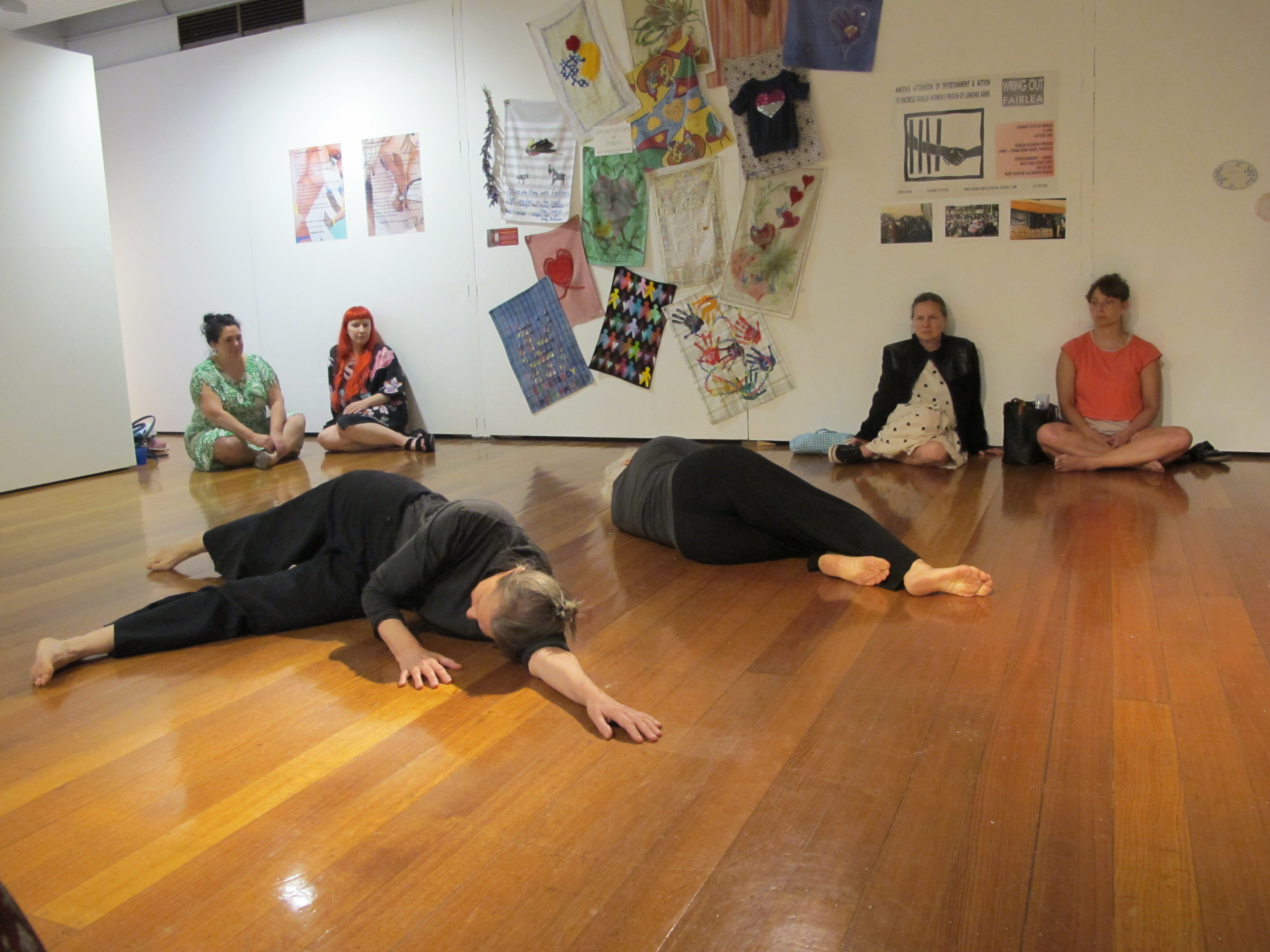
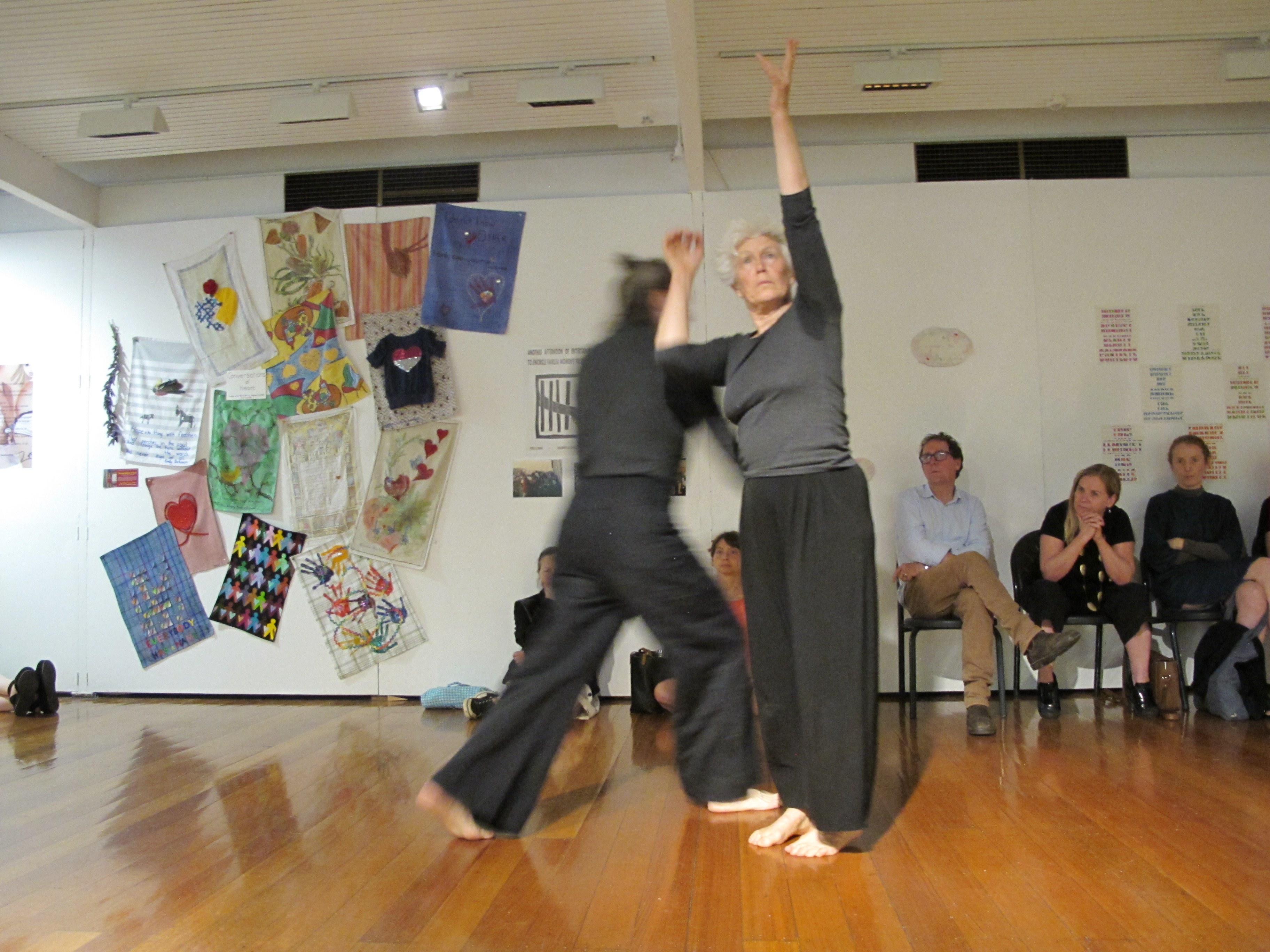
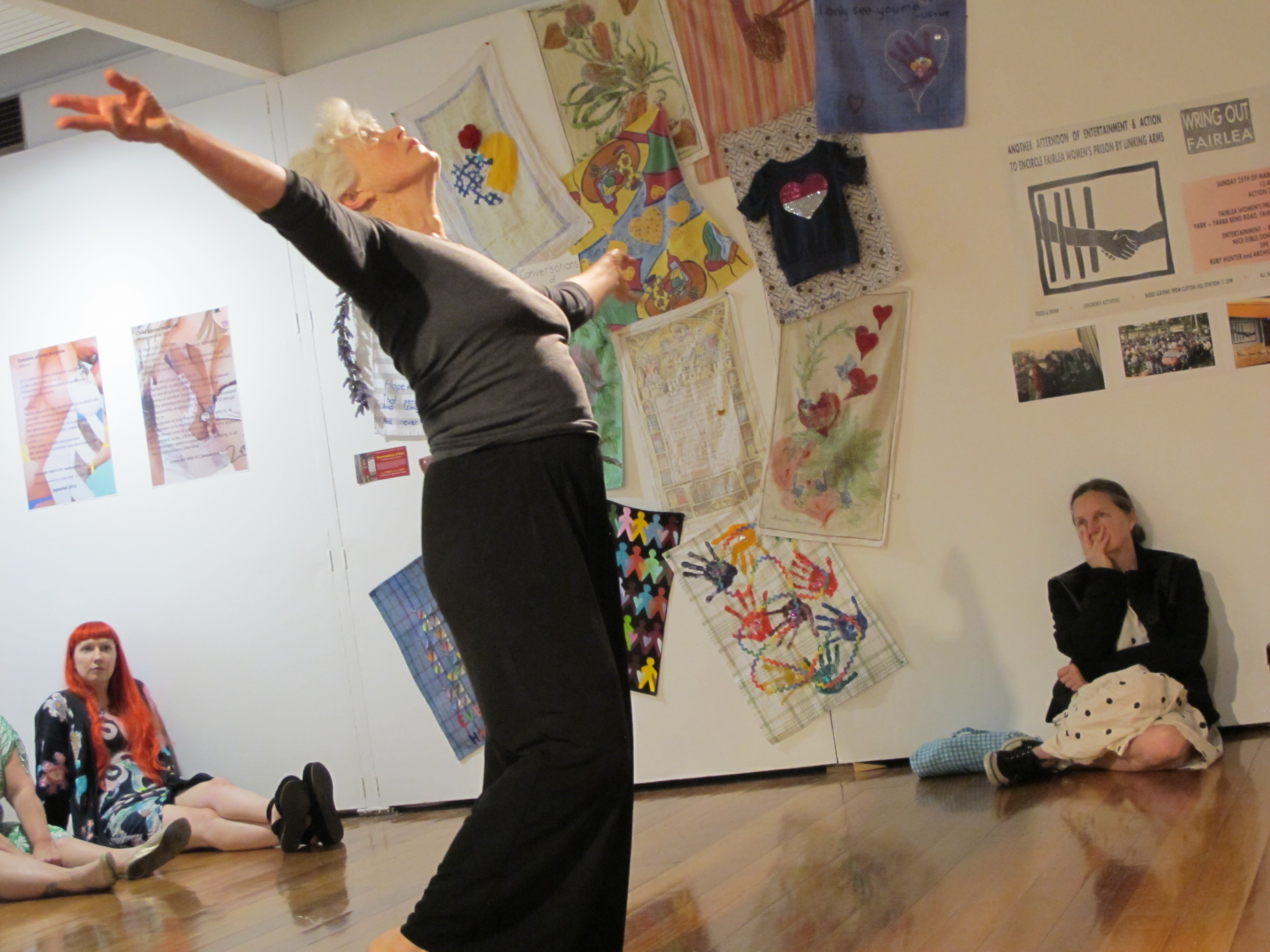
Su Yang, Less Icon - photographic series - and Representations of Female and Male Body under Global Consumerism in China Post 2010s - paper presentation
Less Icon is a series of my self-shot black and white images to explore and to care about the relationship between personal identity and body suffering brought by social standard aesthetics. Through this group of the pictures, I want to pose a question about the identity of the women who do not have any of their personal features after cosmetic surgeries and instead take on the same features as Internet celebrities. The visual presentation of this work accentuates a refusal to be the “beauty” that is close to the dominant social standard of female beauty, which has been passed from the past to the present. By refusing to represent the femininity that appears in Chinese Internet celebrities’ selfies for sex appeal, I create the images of myself with a powerful and terrifying atmosphere.
The paper focuses on the new ideas of female beauty that have evolved through the predominance of selfie culture, cosmetic surgery, and bodybuilding in China (mainland) since the 2010s. It does not only examine how the new female representation reflect the spectatorships meant to satisfy male’s heterosexual desires, in which woman is treated as image and man is regarded as bearer of the look, it also presents how interpellation effects women’s aesthetic aspirations of being looked in a particular way and how that is promoted by feminine-ism. However, after 2015, this male-centered beauty modification by women seems to be changing in the recent Chinese beauty advertising and social media, where women have become in active roles and therefor have higher purchasing power than before. I will analyze the negative facets of selfie culture, cosmetic surgery, and bodybuilding as using the female body as an instrument of patriarchy. I will also touch on how the current Chinese dominate conception of feminism as “feminine-ism affects” how women see themselves and how others are seeing them. This paper emphasizes both female and male images that do not only elaborate feminist concerns but also directly reflect the global consumerist influence on constructing our ways of seeing and representing bodies and beauty norms.
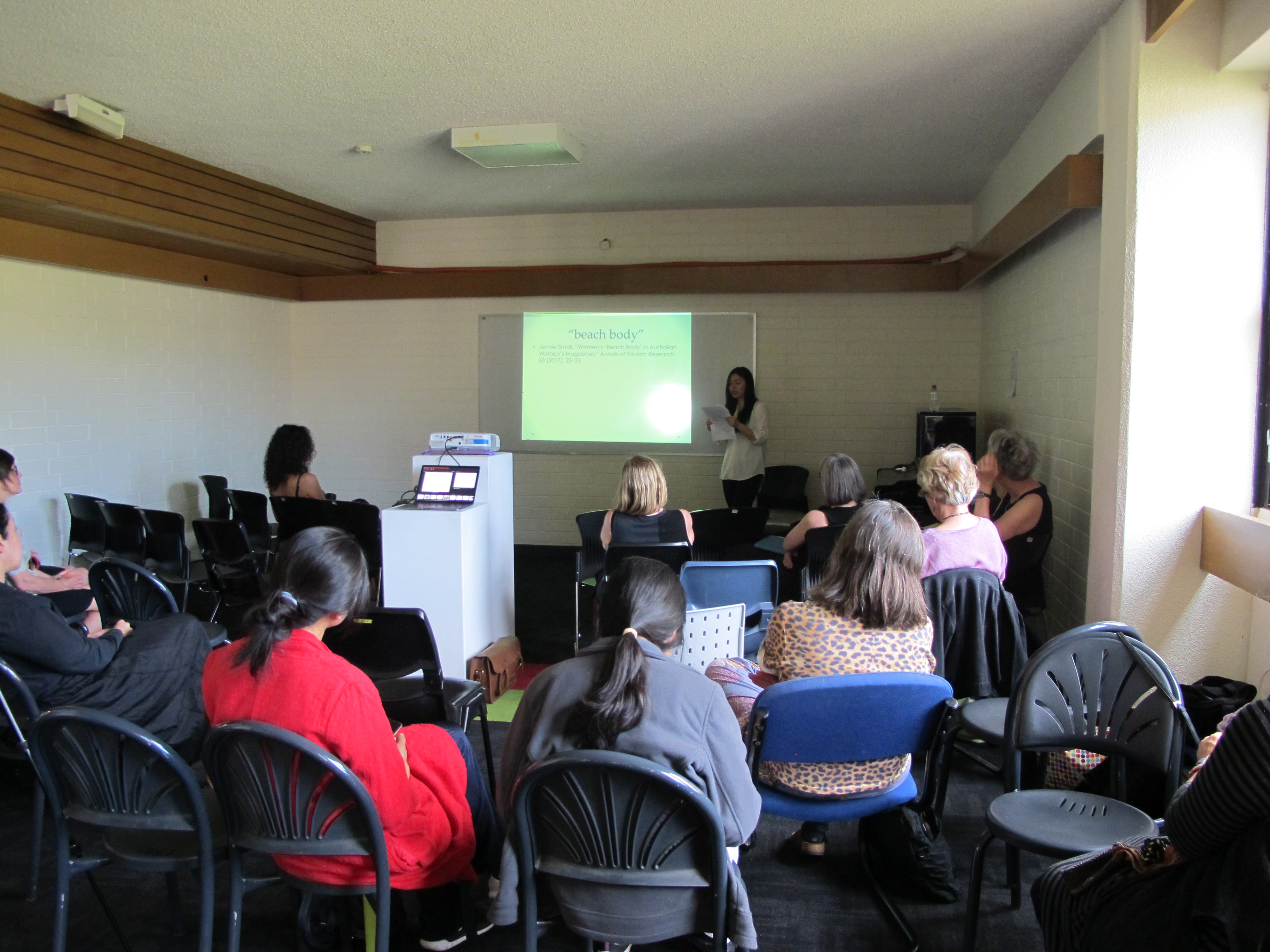
Azza Zein, The Migrant Material - performance lecture
Hi I am a pole. Ninety by ninety by two point four. I was originally a pine tree in the industrial forest, not an oxymoron as it sounds. Organic or non-organic, I still breathe while Azza carves me. As a witness and a participant, I am happy to explain the process of her studio practice: she cares for materials. In her studio, I have been sitting on the side leaning horizontally for a while, missing the sky and especially the clouds. I miss the forest and the feeling of my height when touching the ground. I had many friends when I was a tree. We cuddled through our branches and our roots, sometimes wrestled under the soil. Like all families we fought. We were deported en masse to a factory then a warehouse. Until that moment I could have remained a tree forever but I was unplugged, cut and my body shattered in pieces.



Sonia Zymantas, The Other List - installation and workshop
The Other List is an interactive, process-driven visual art workshop and installation made up of multiple coloured flags. Drawing on women’s conversations and inspired by Women's March protest banners, the flags form a collective narrative that act as protest symbols to examine the casualisation of gendered language. Drawing on women’s daily conversations, The Other List examines the casualisation of gendered language through a series of participatory, processdriven, art workshops and installation. In light of the #MeToo movement, the installation is the result of a year-long project, involving a series of workshops, and consultations that started on International Women’s Day including a workshop in Victoria Square Project, Greece and at No Vacancy Gallery, RMIT Melbourne and presented at Knox Immerse arts festival in September and will conclude at One Night In Footscray in November. The flags are a form of social and political commentary, inspired by protest banners at the Women’s March as documented by individuals online.


